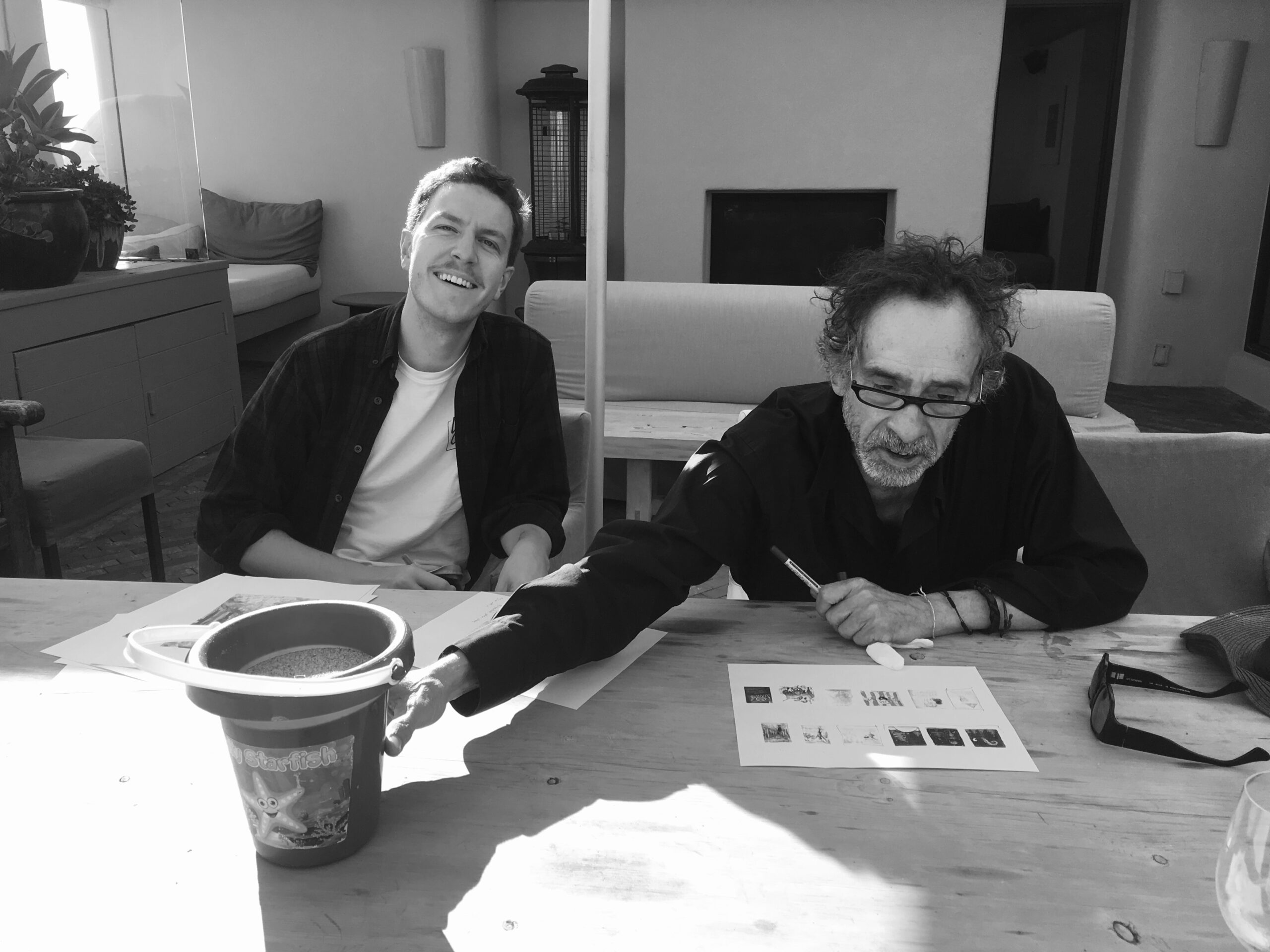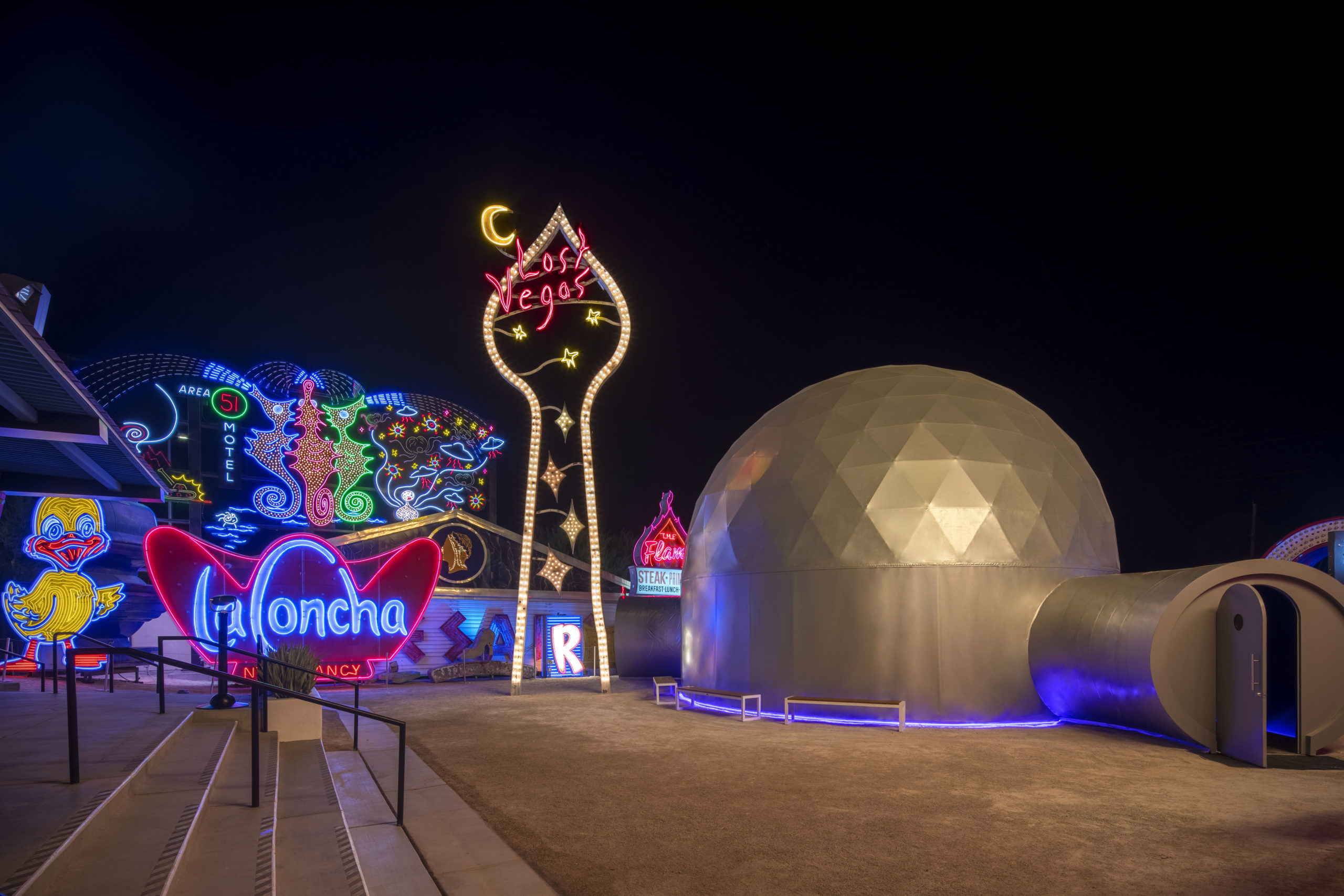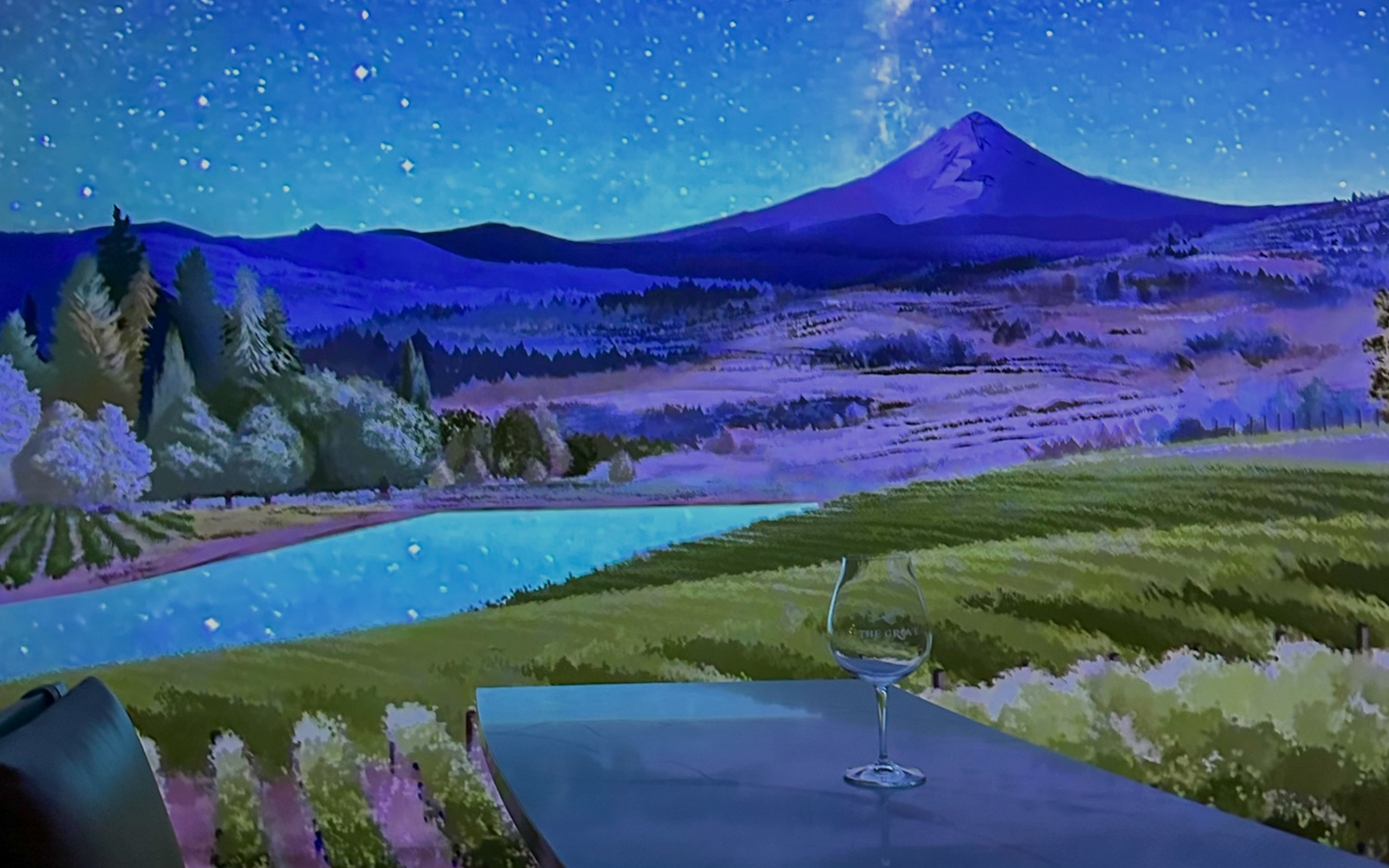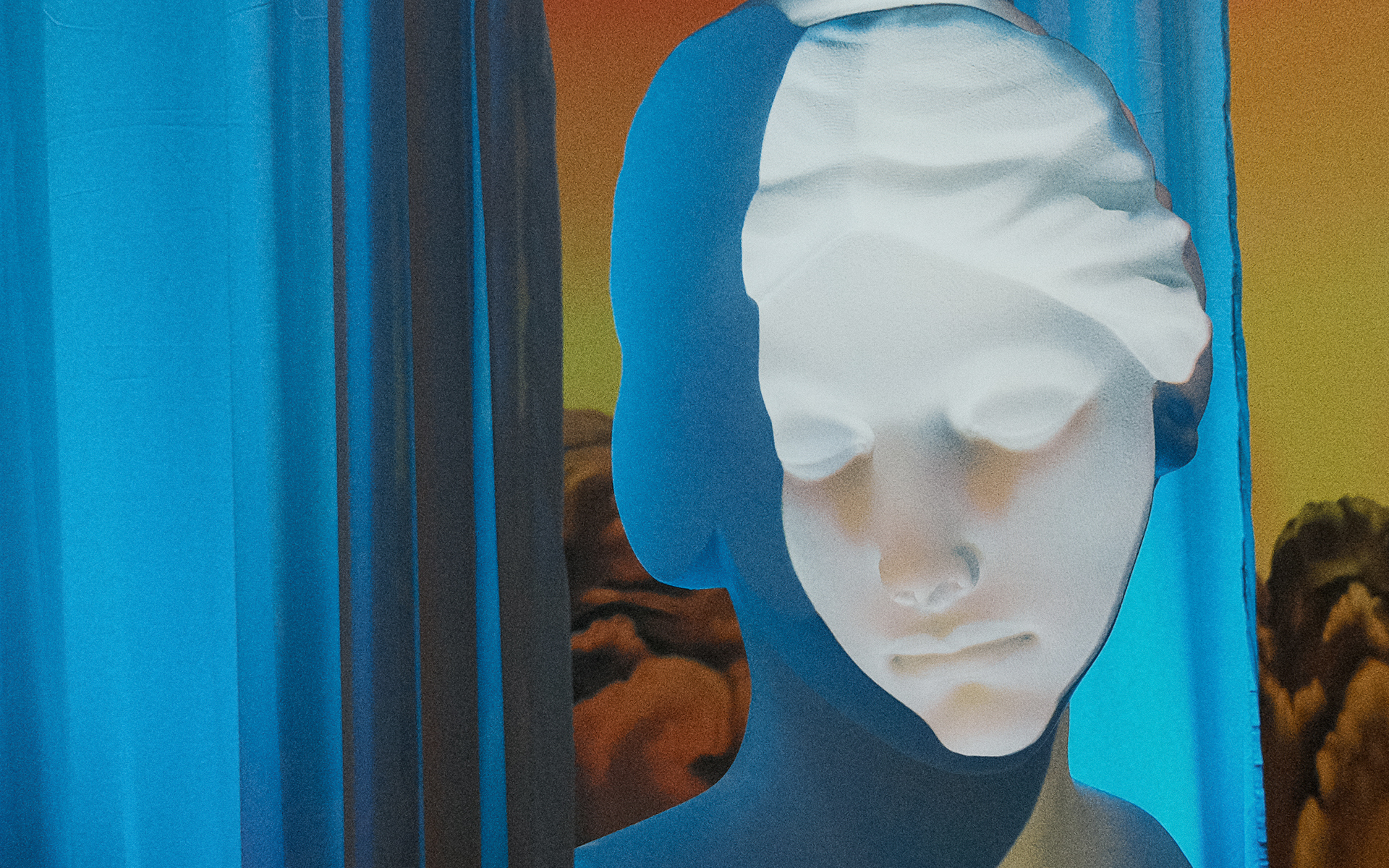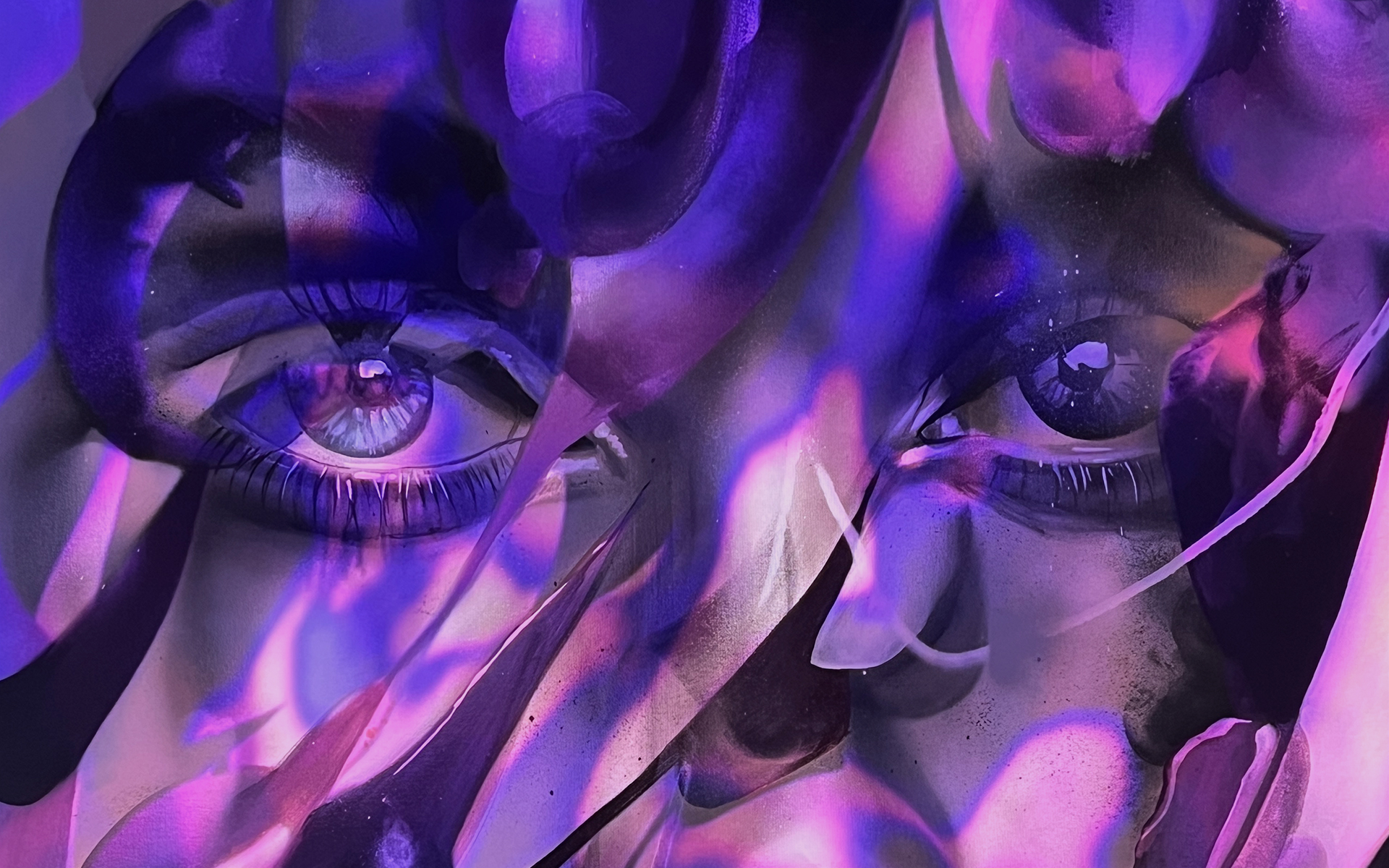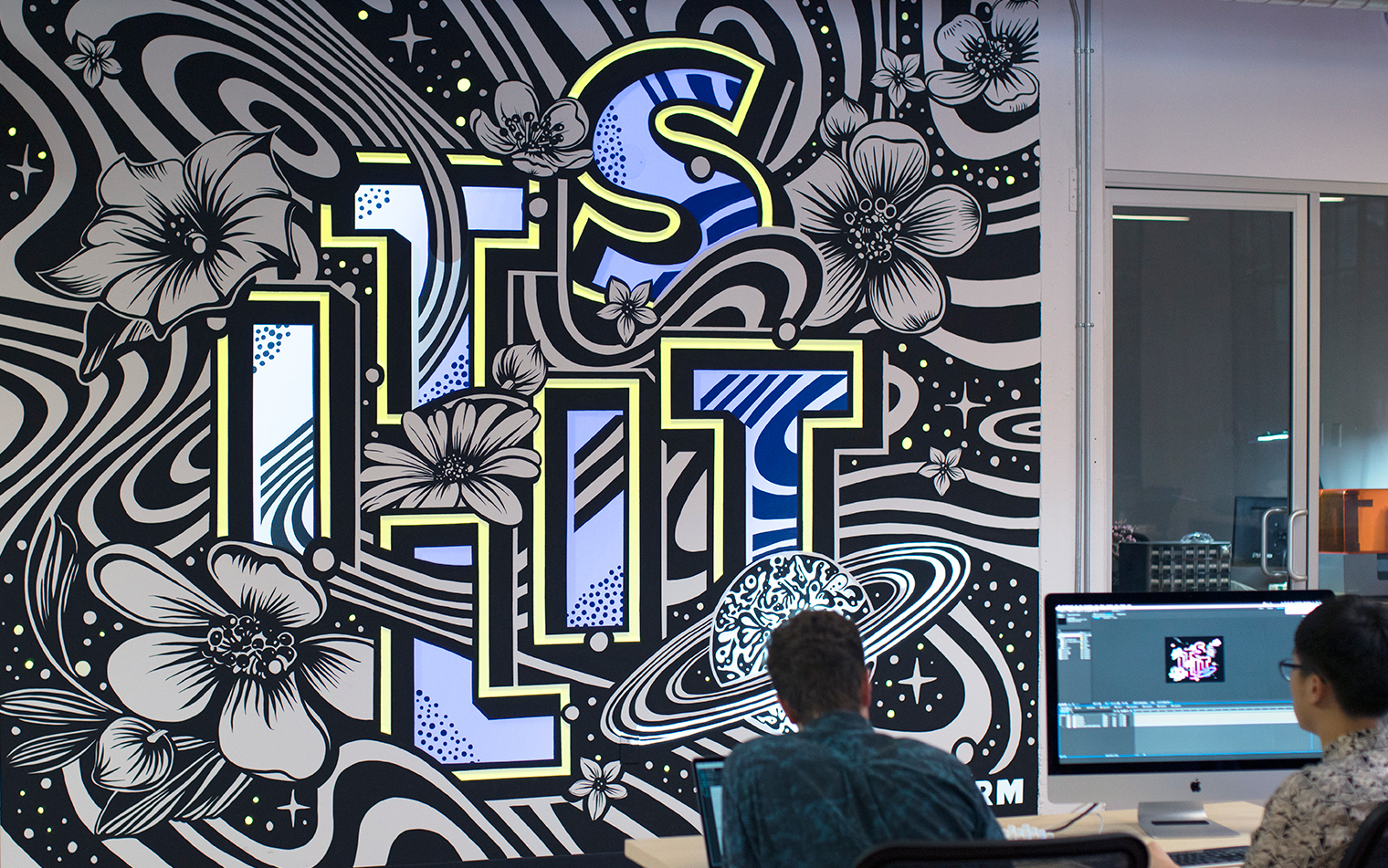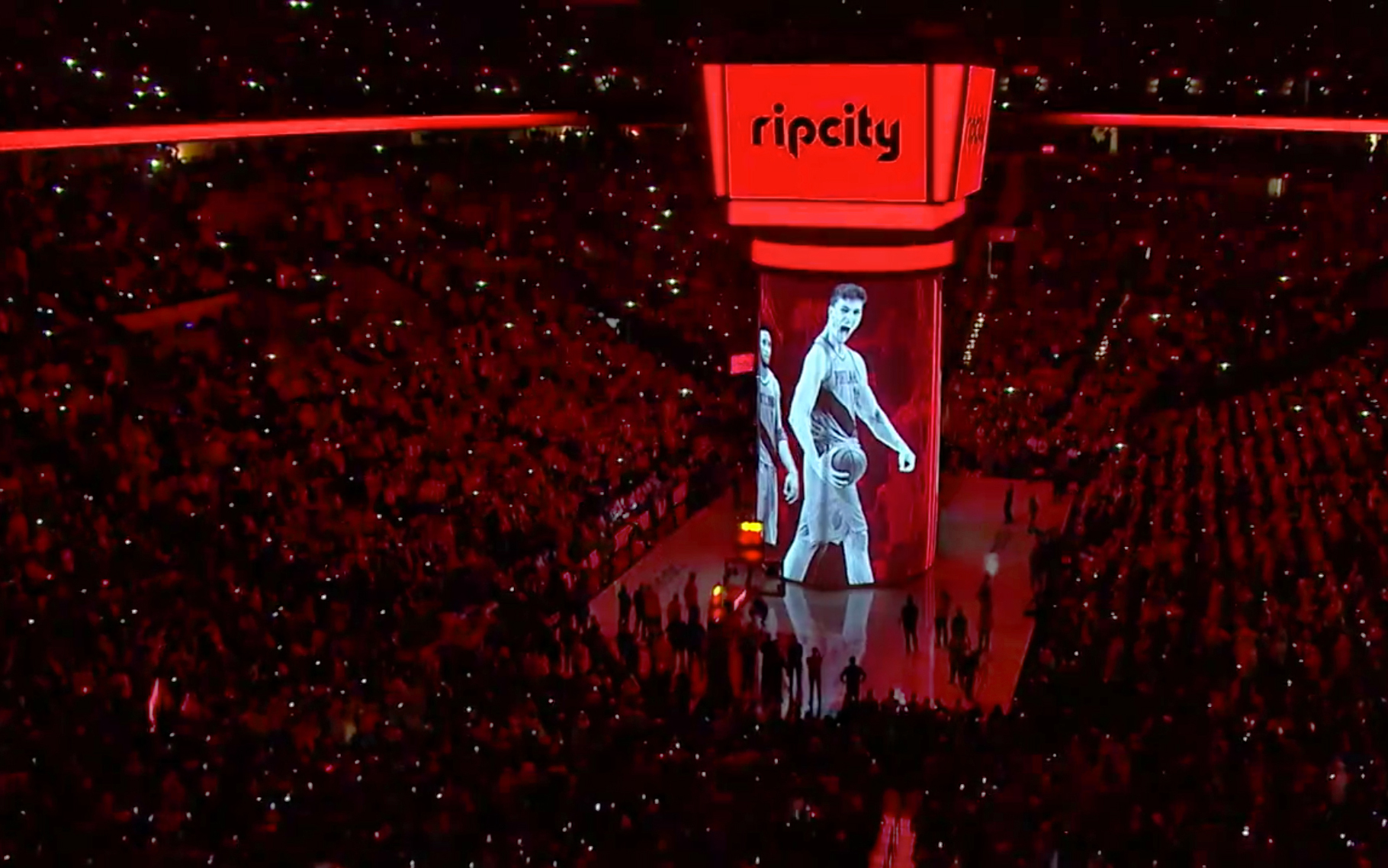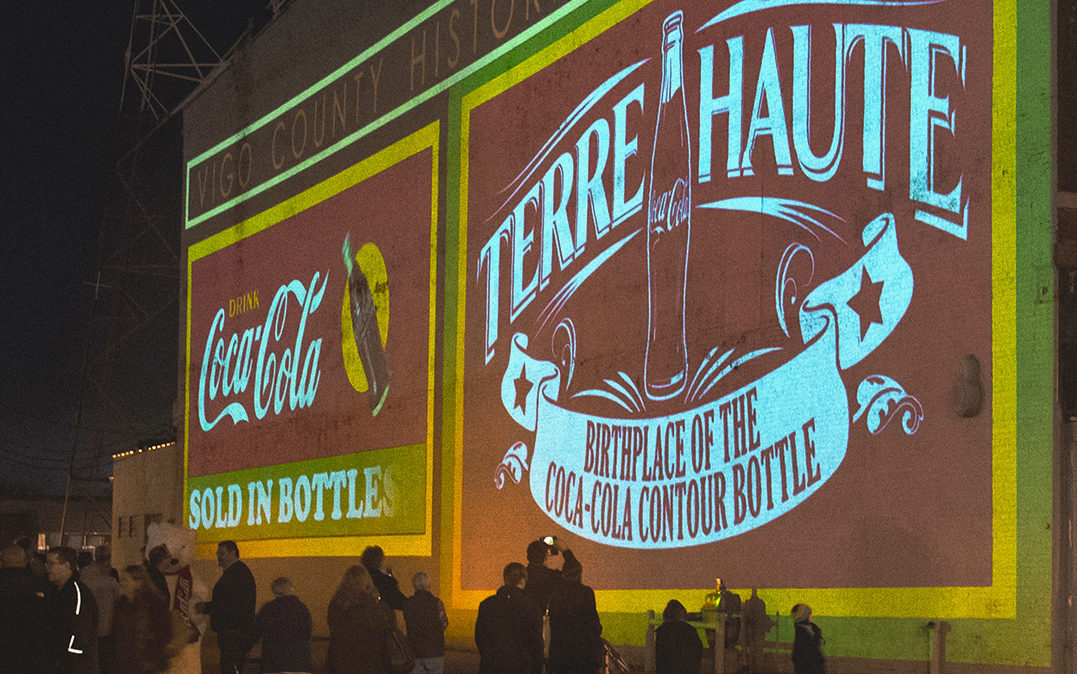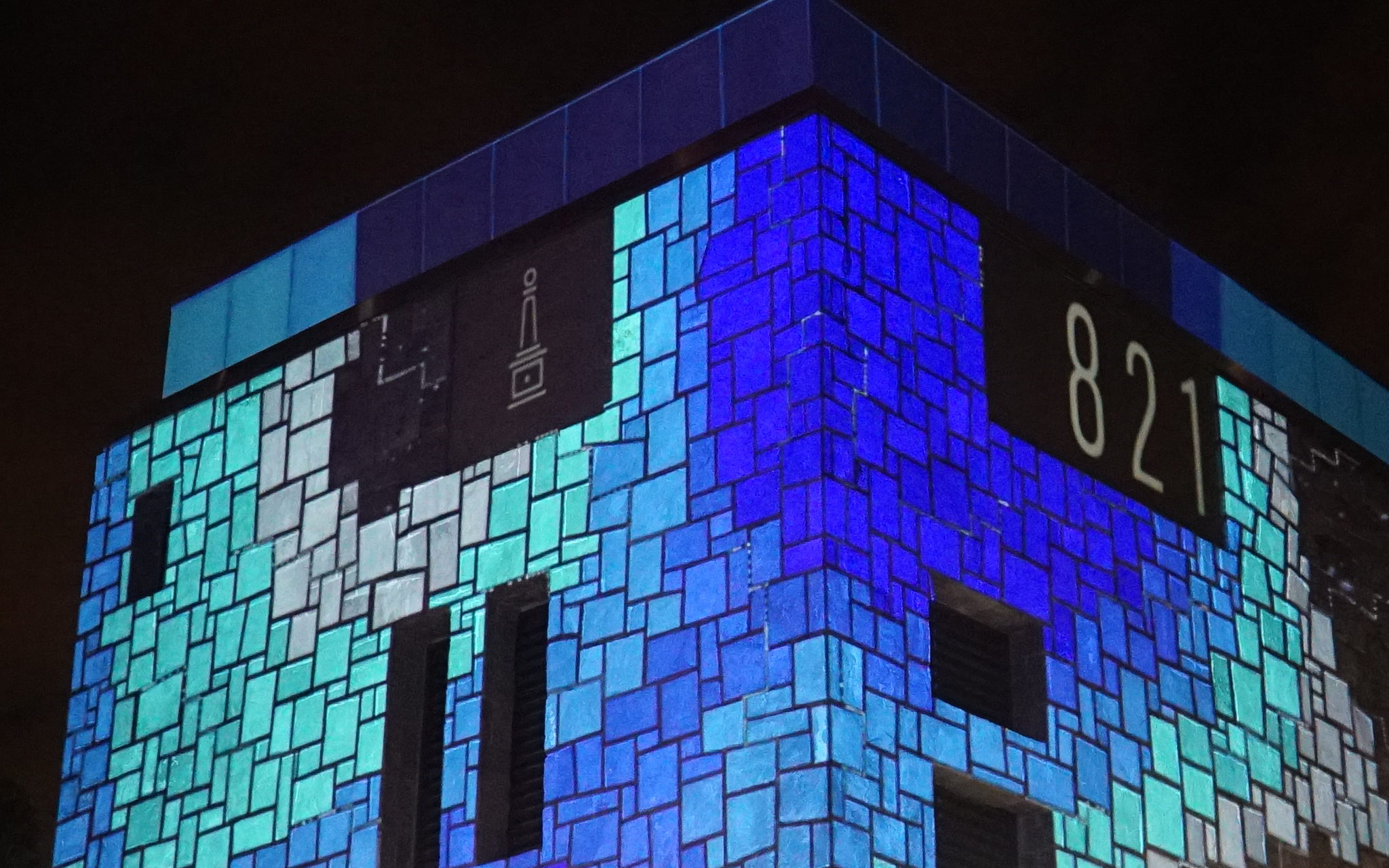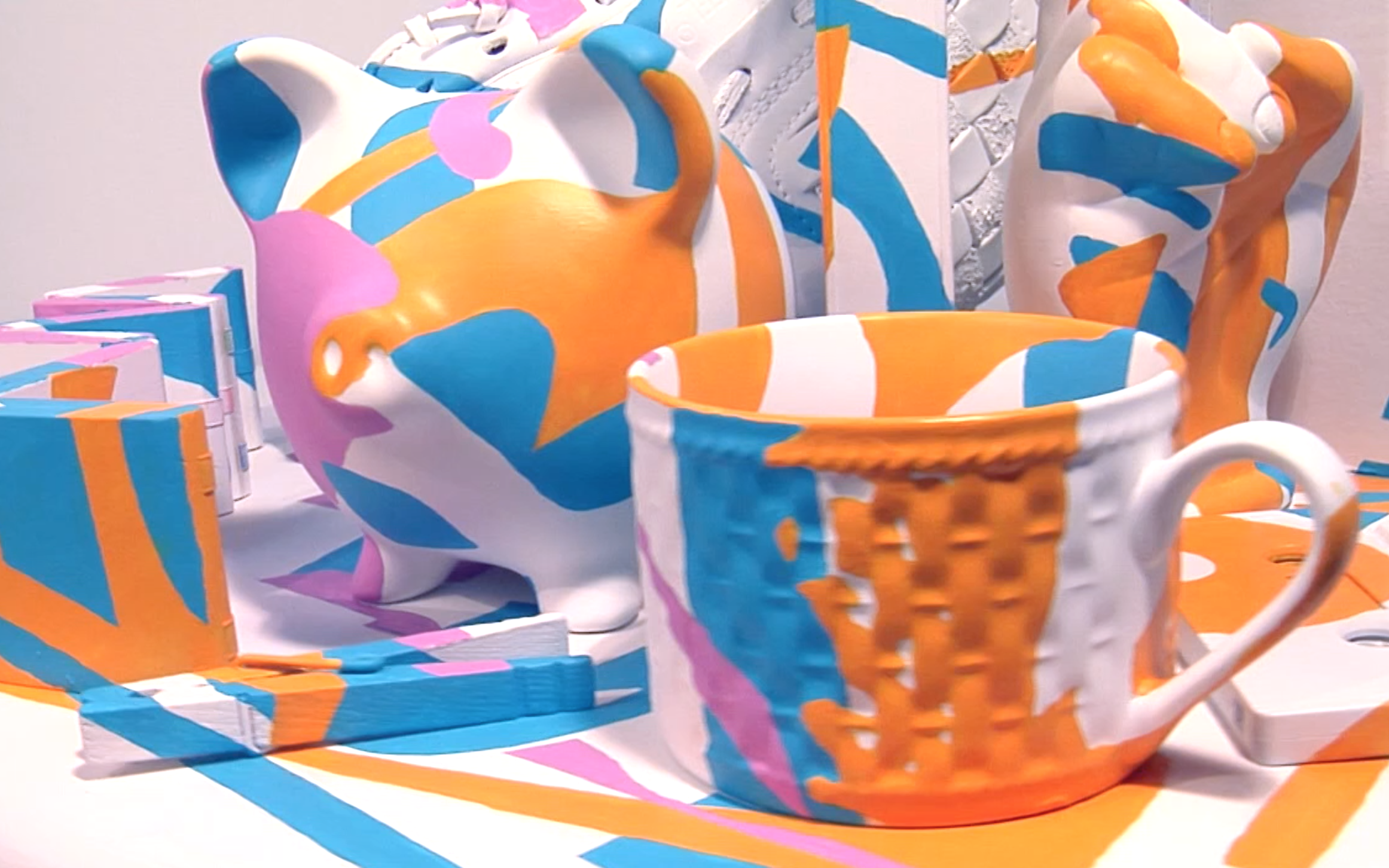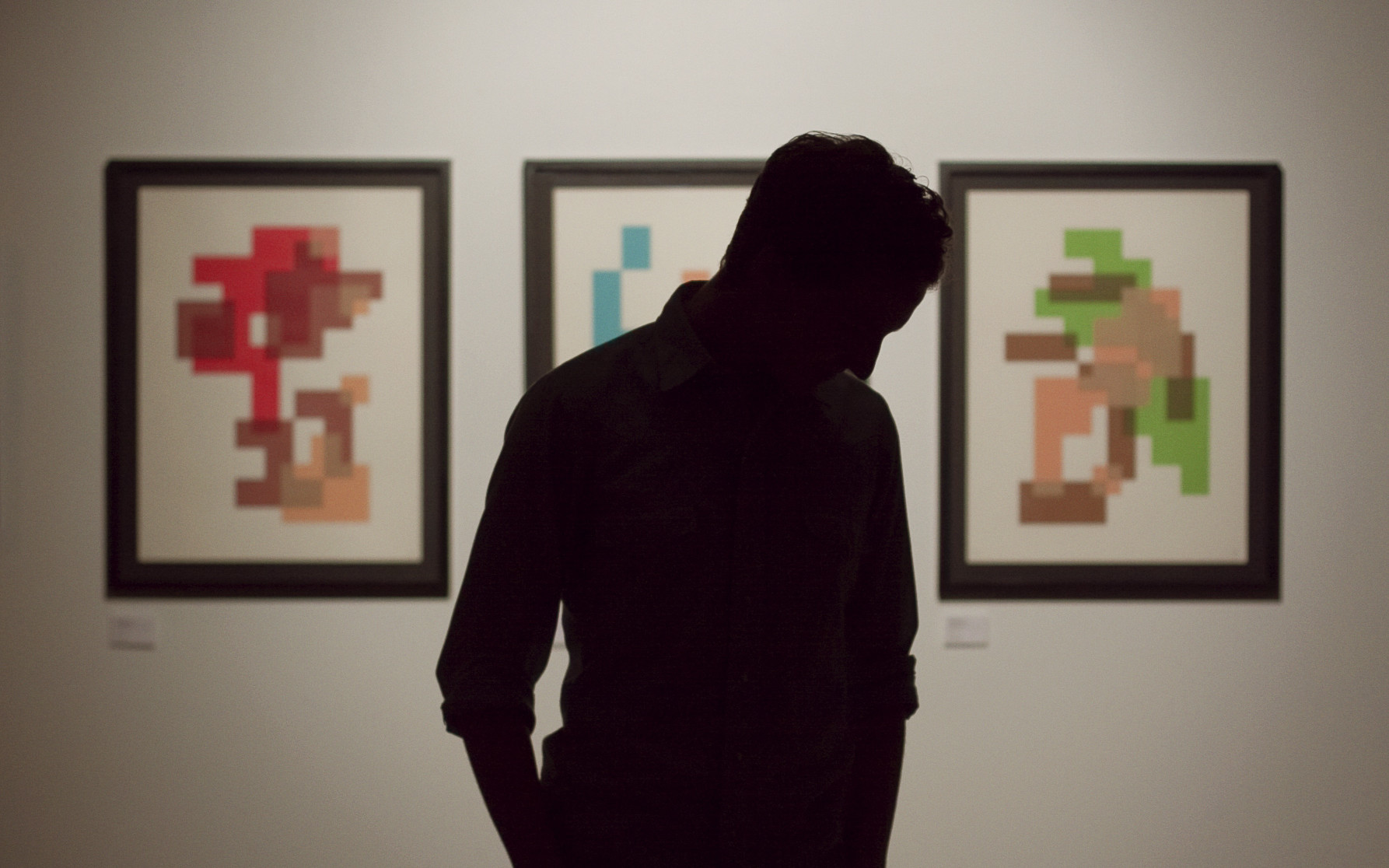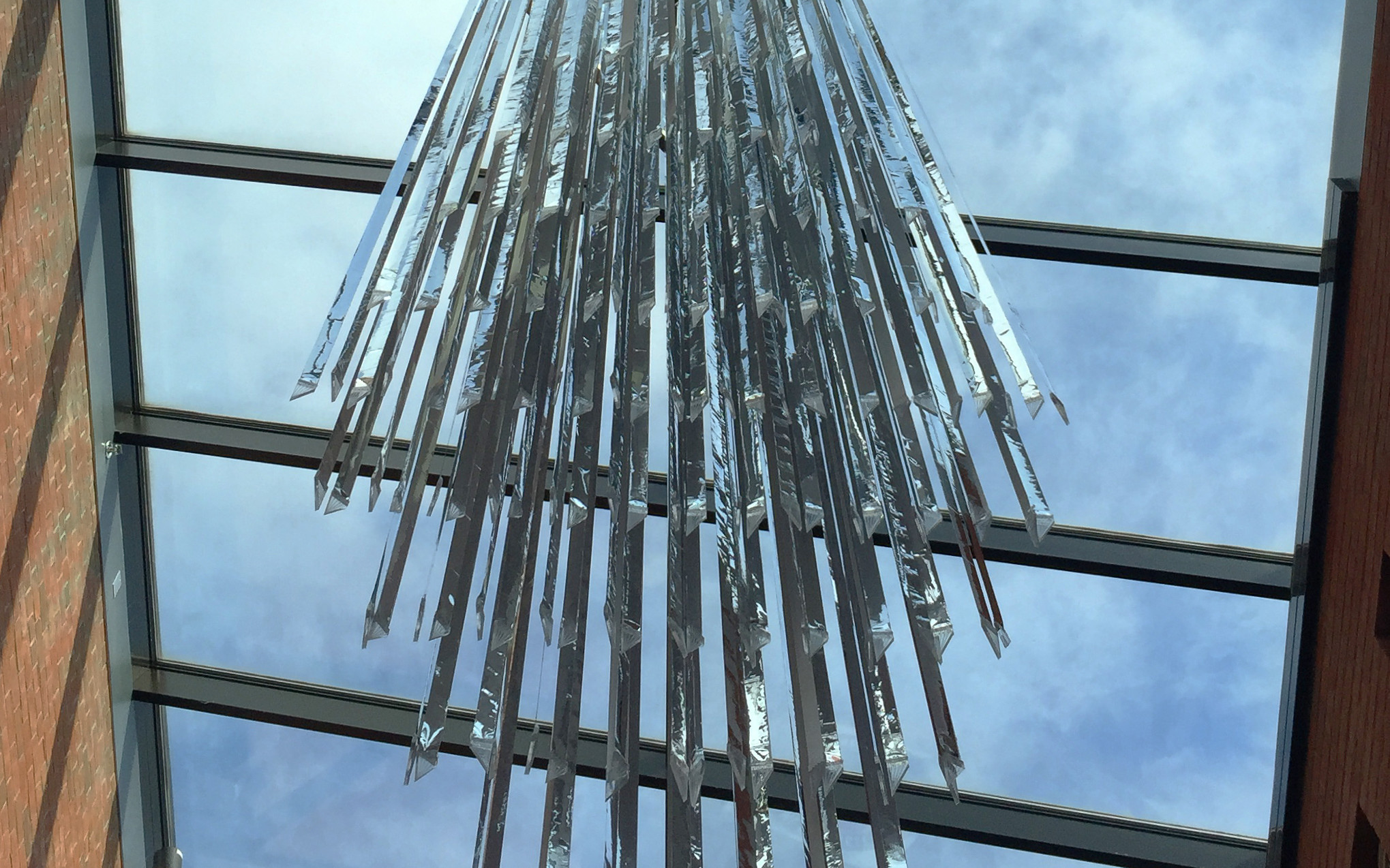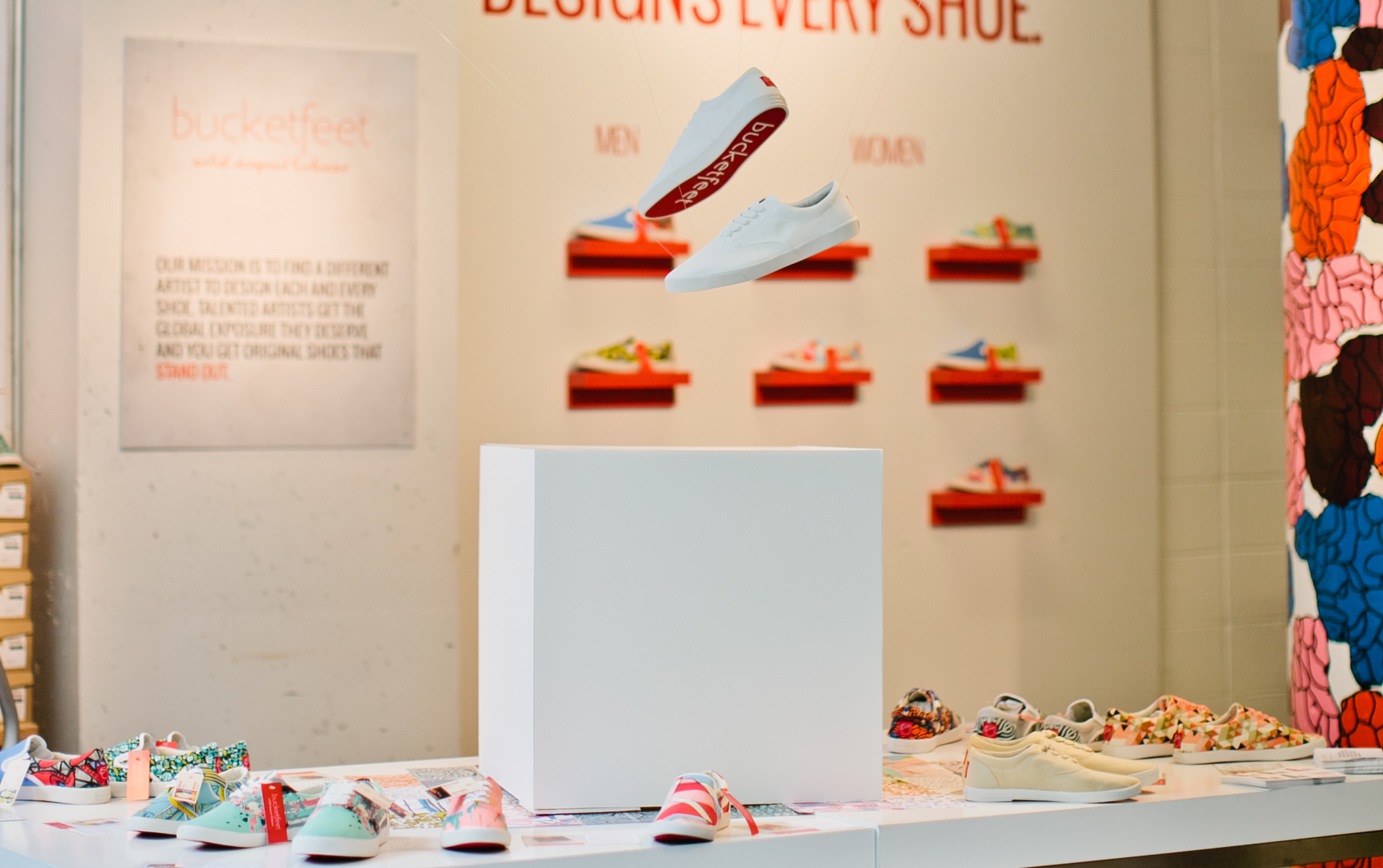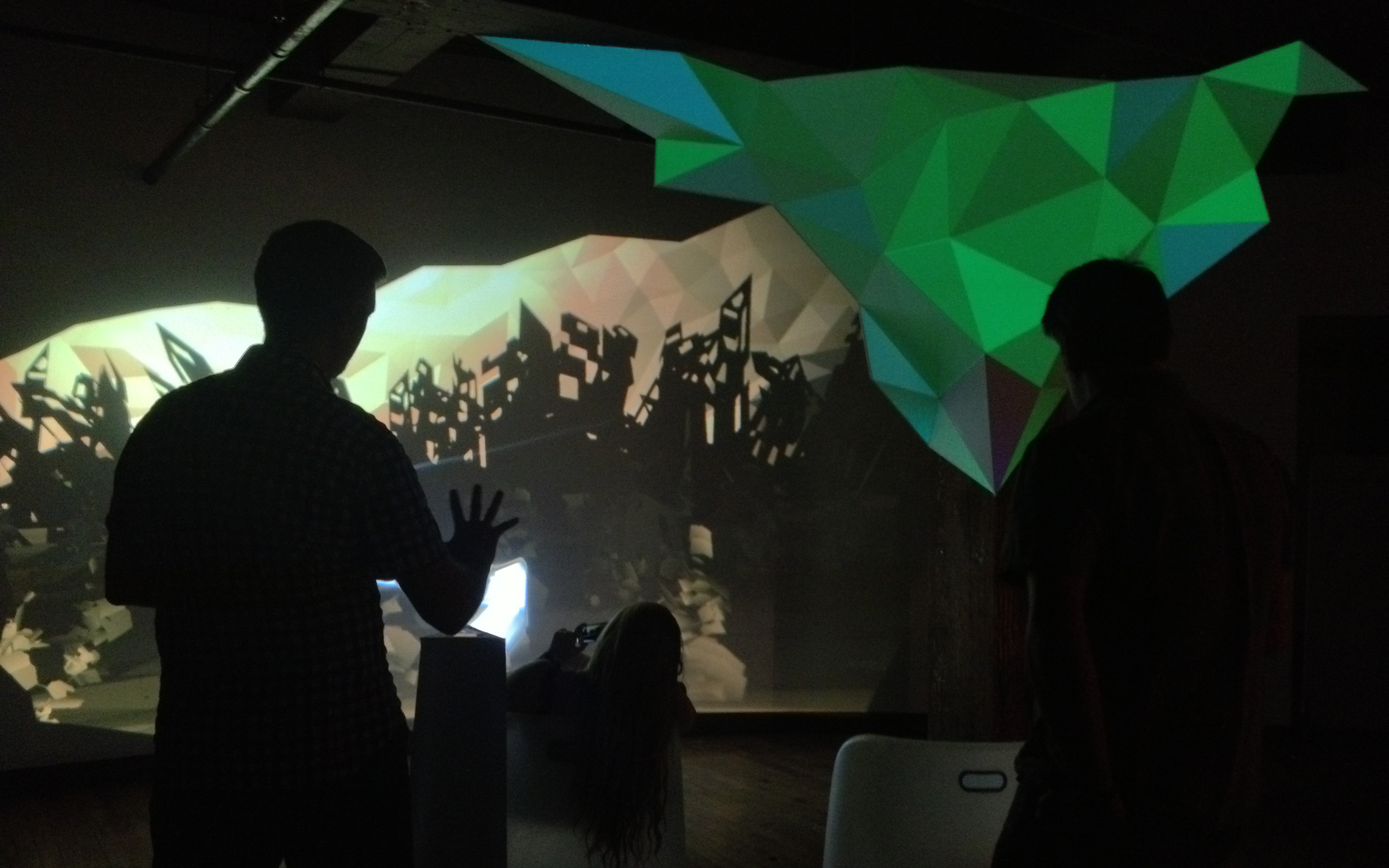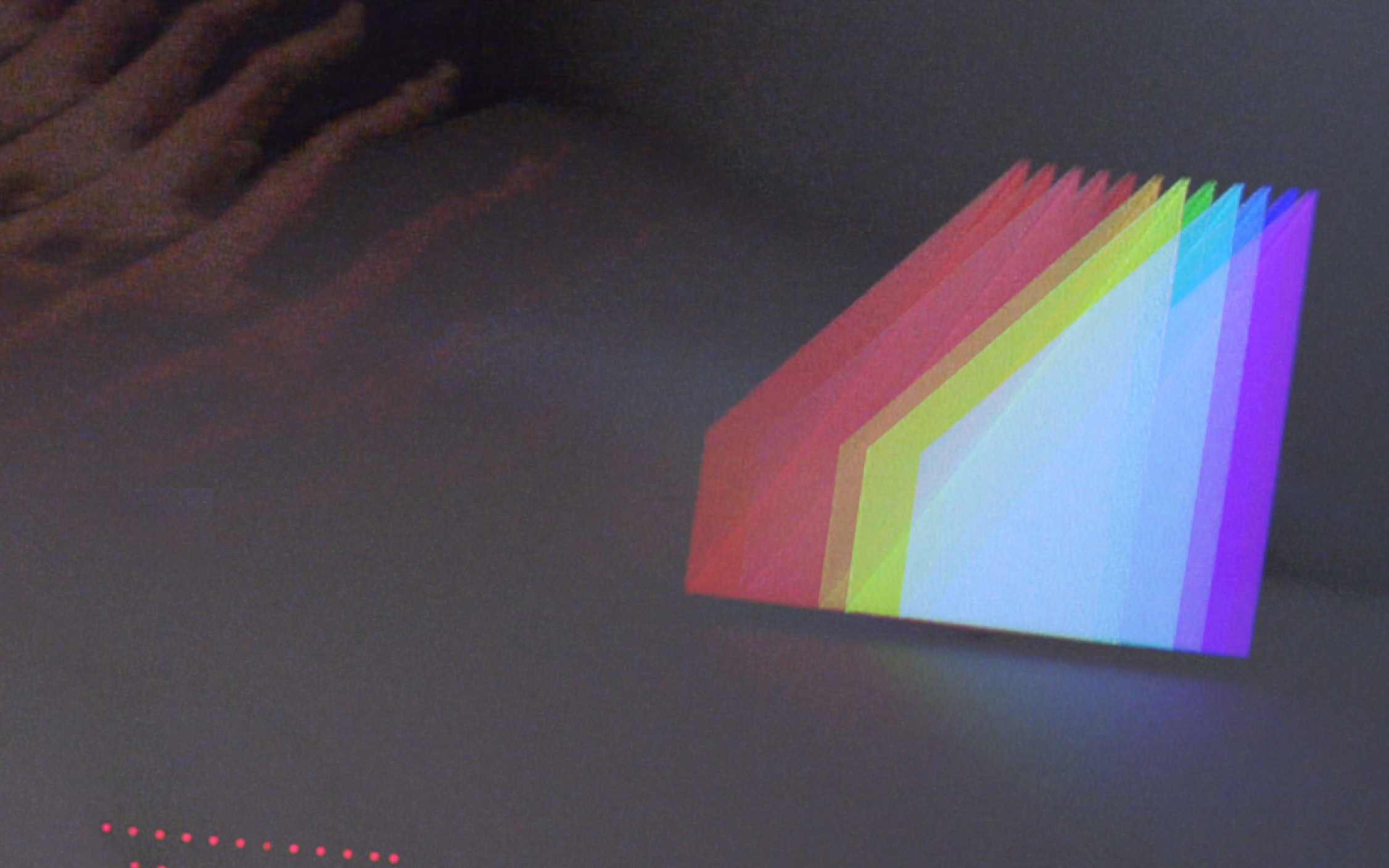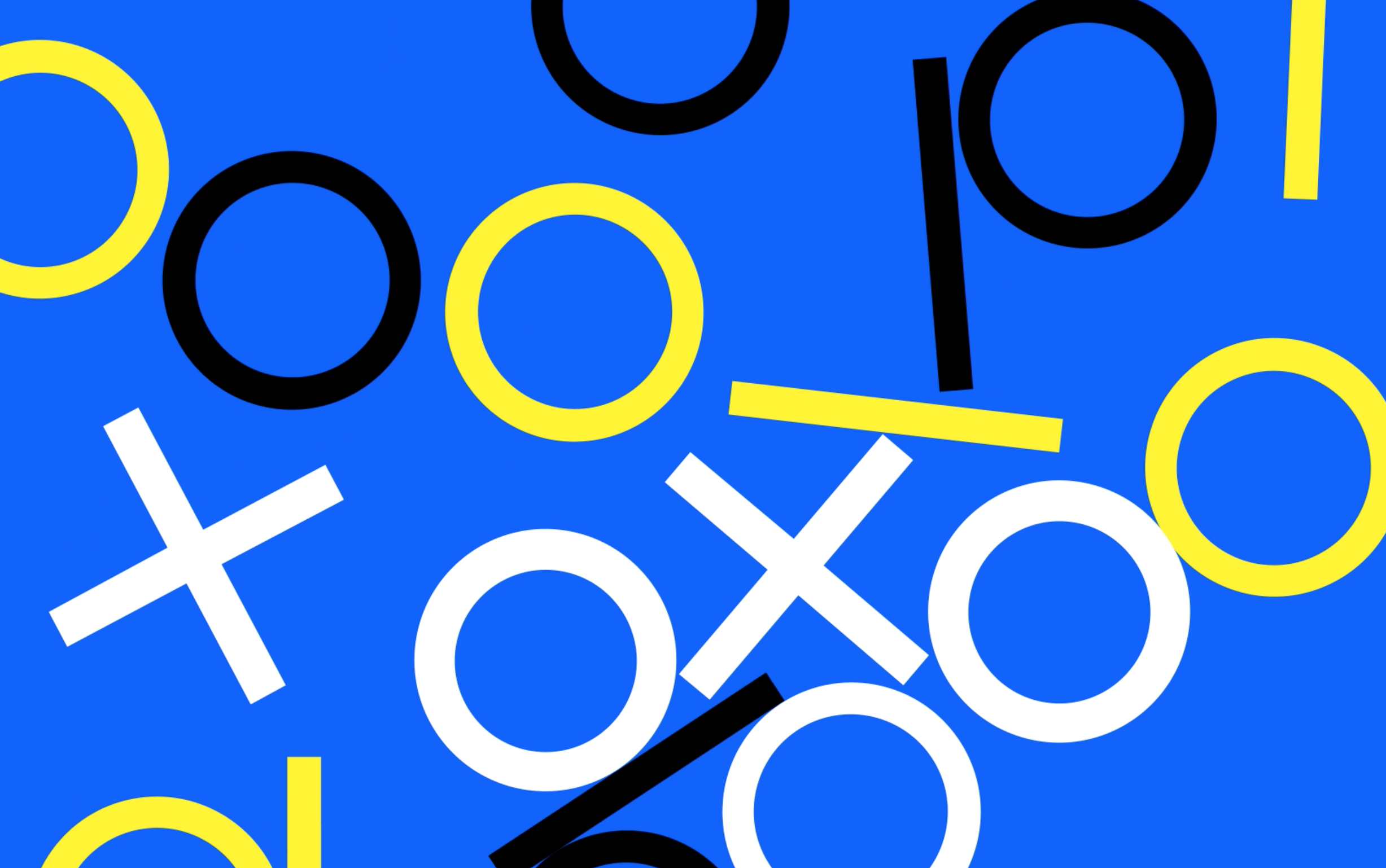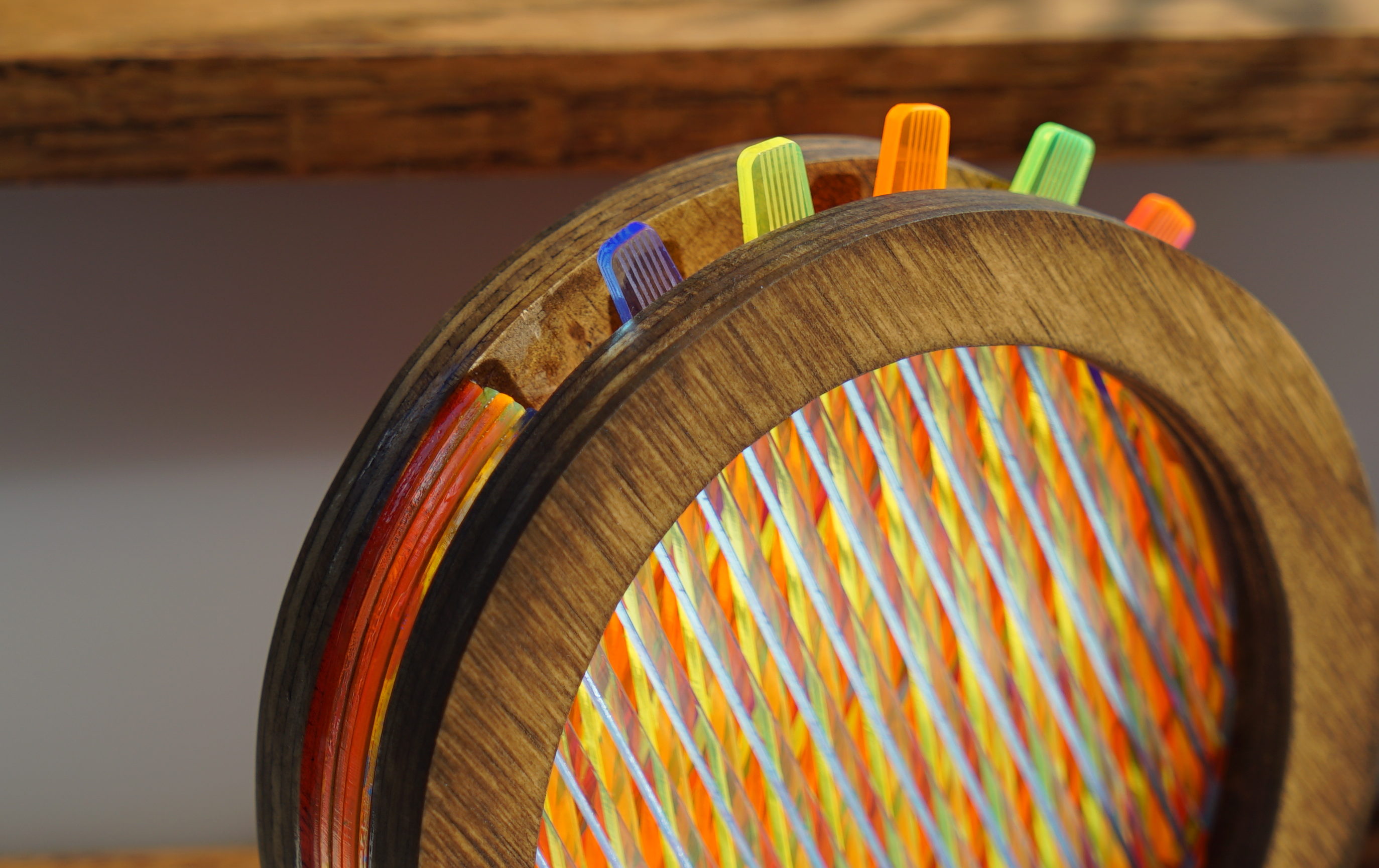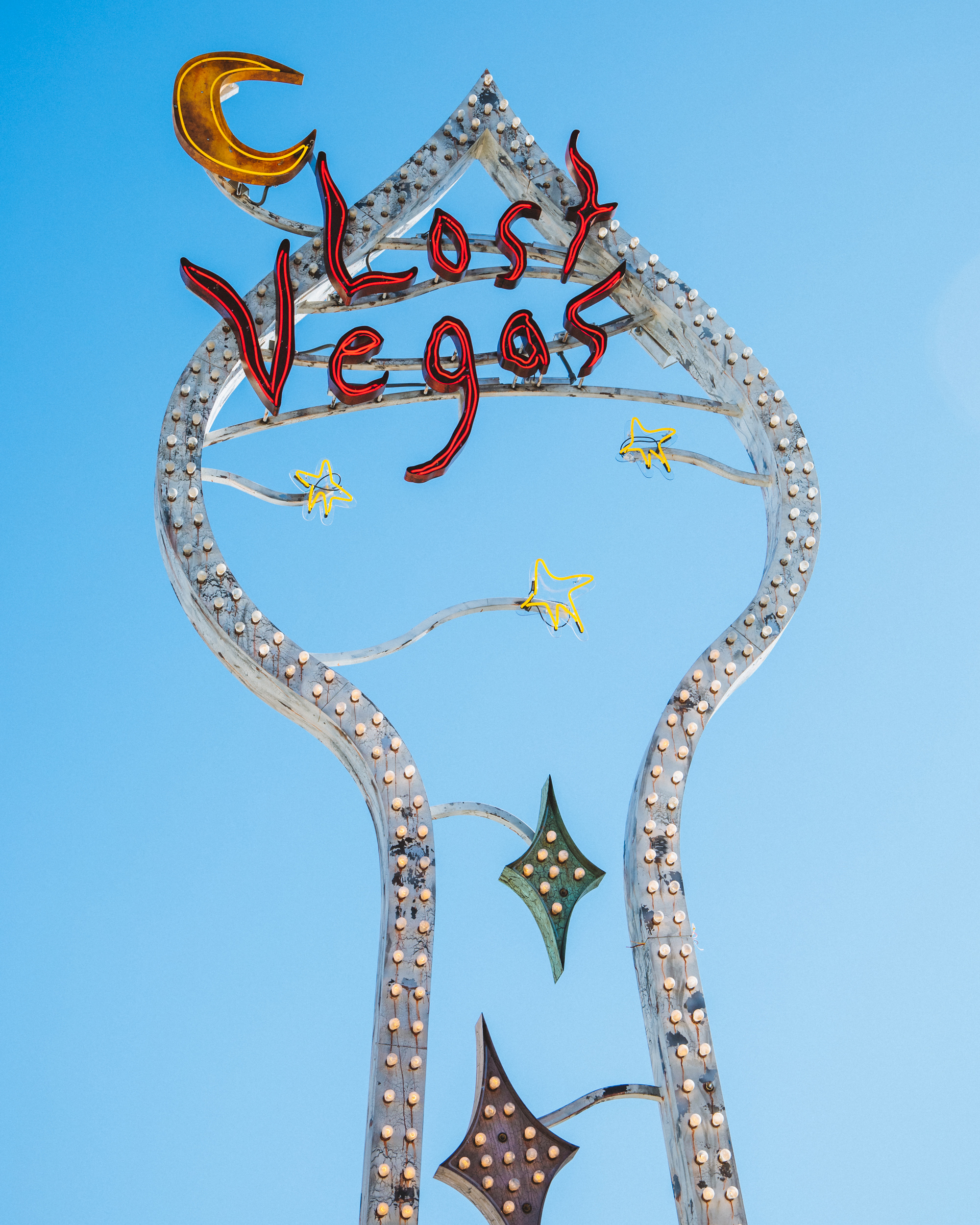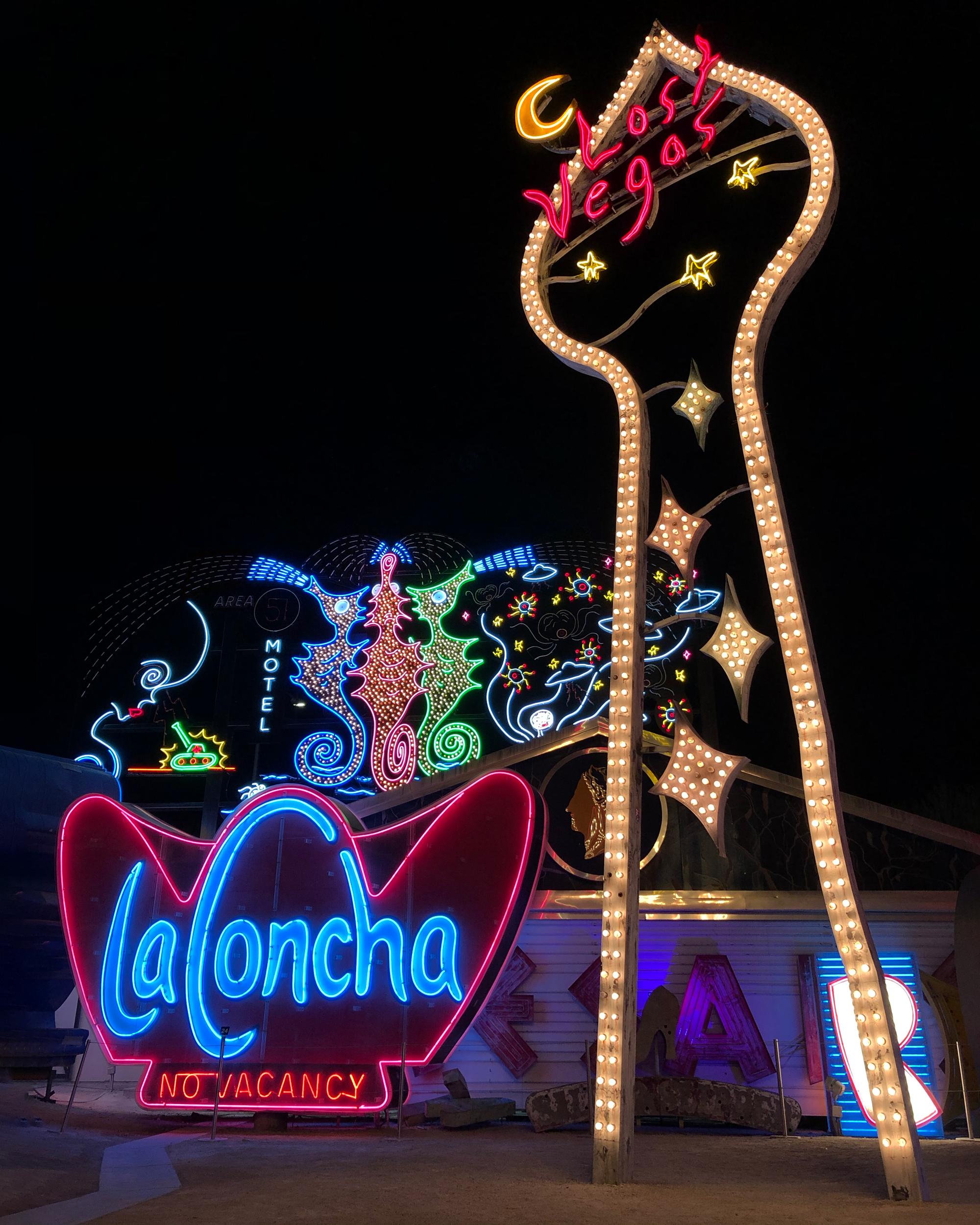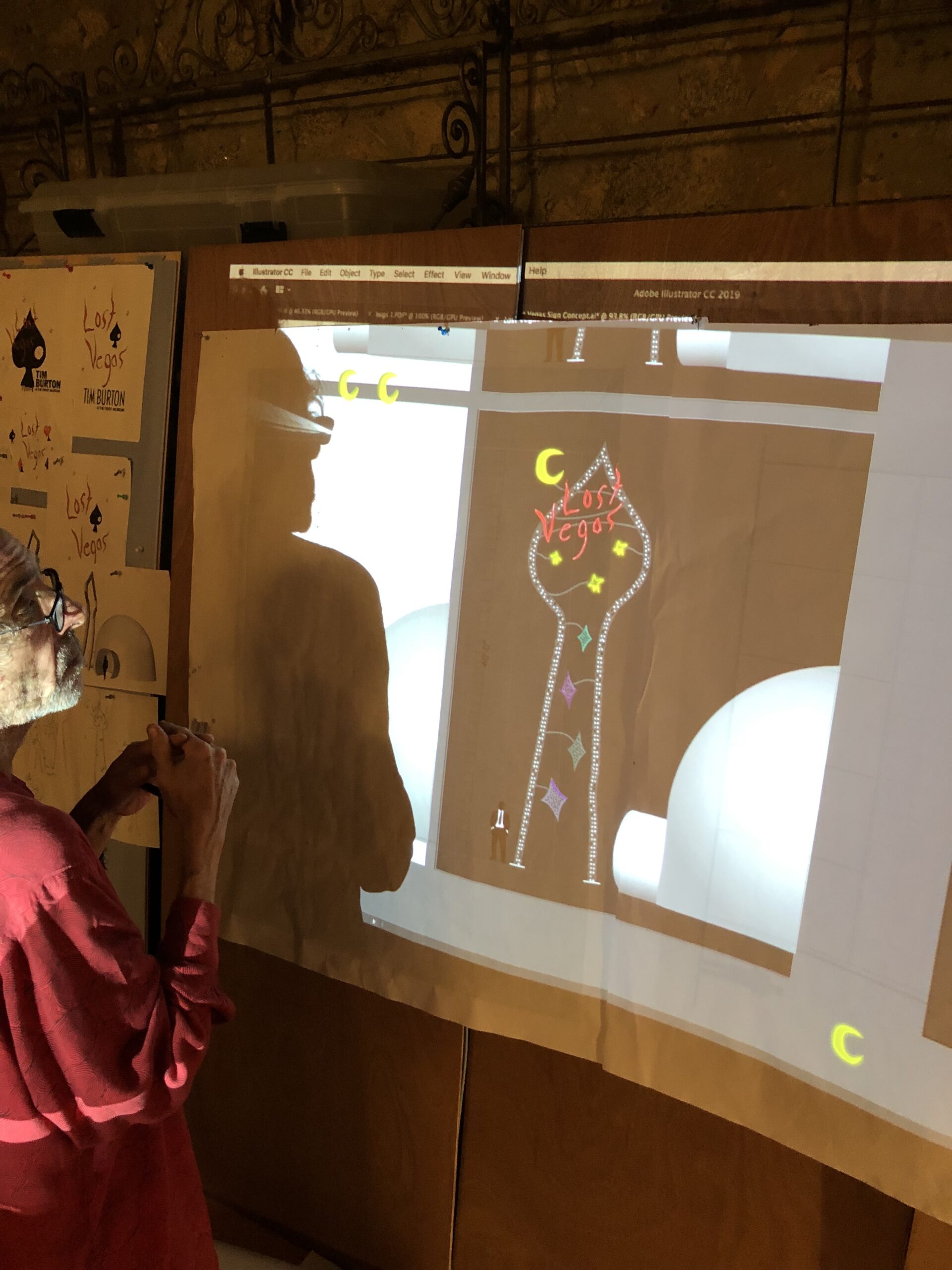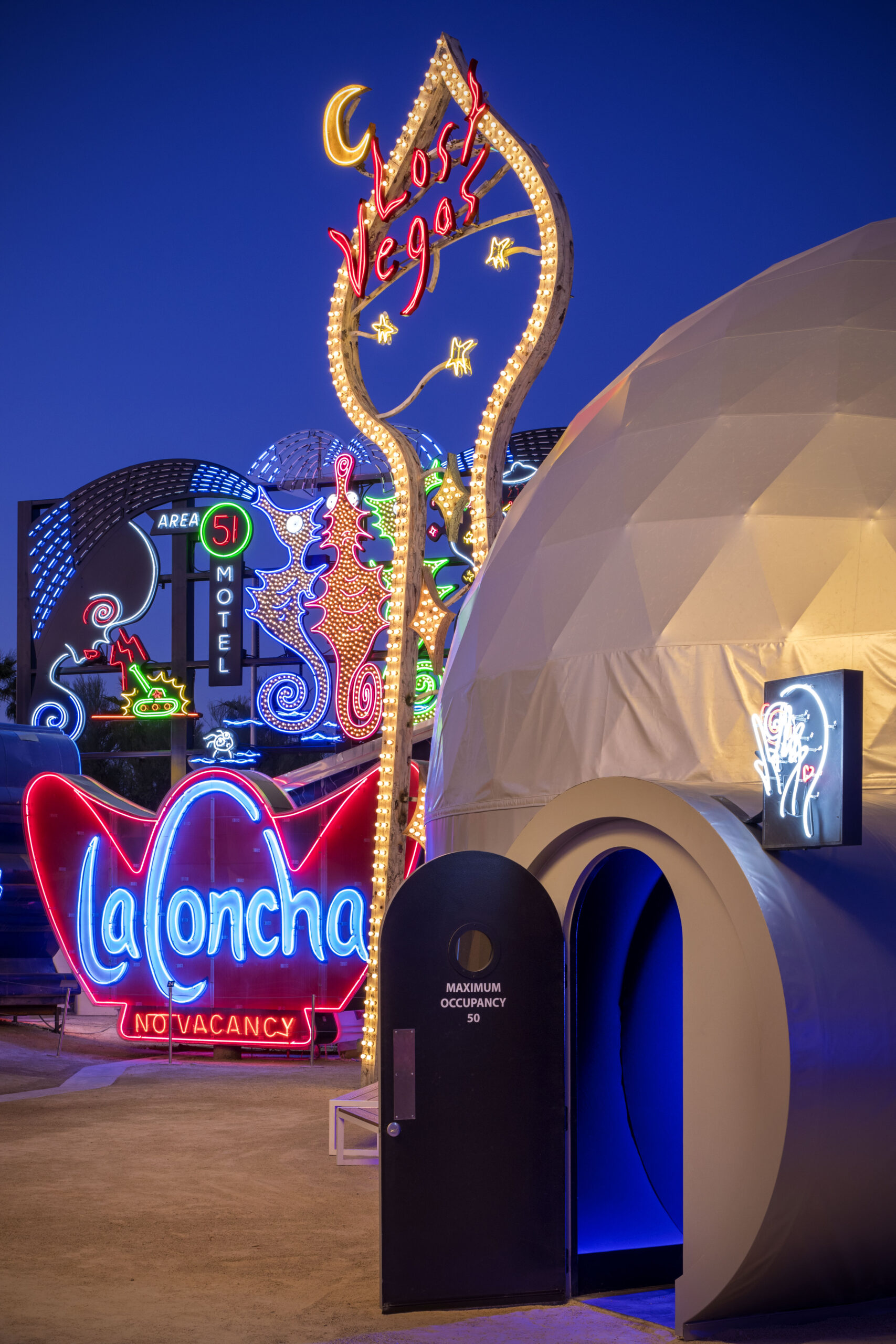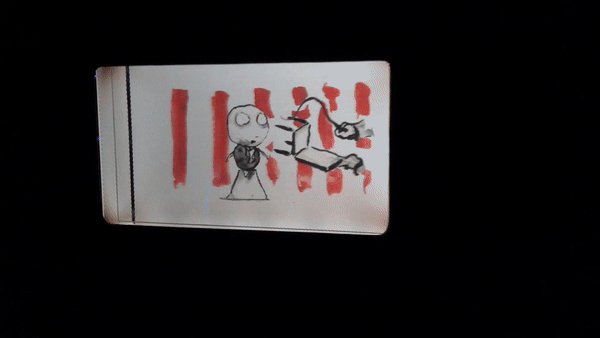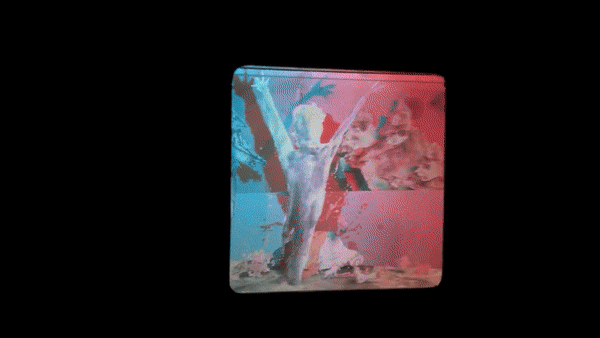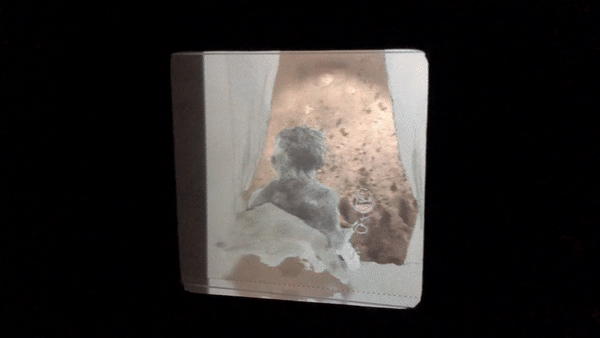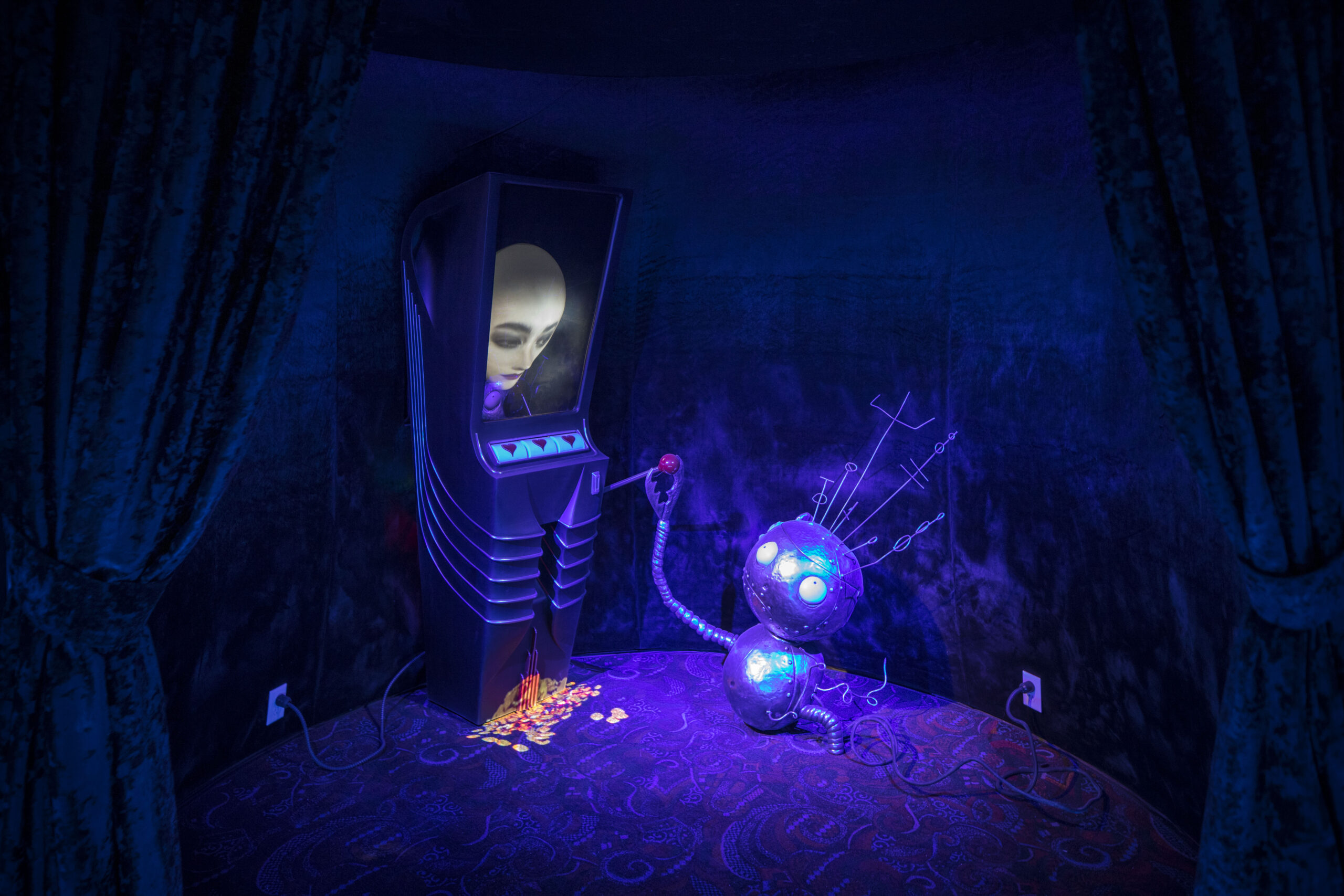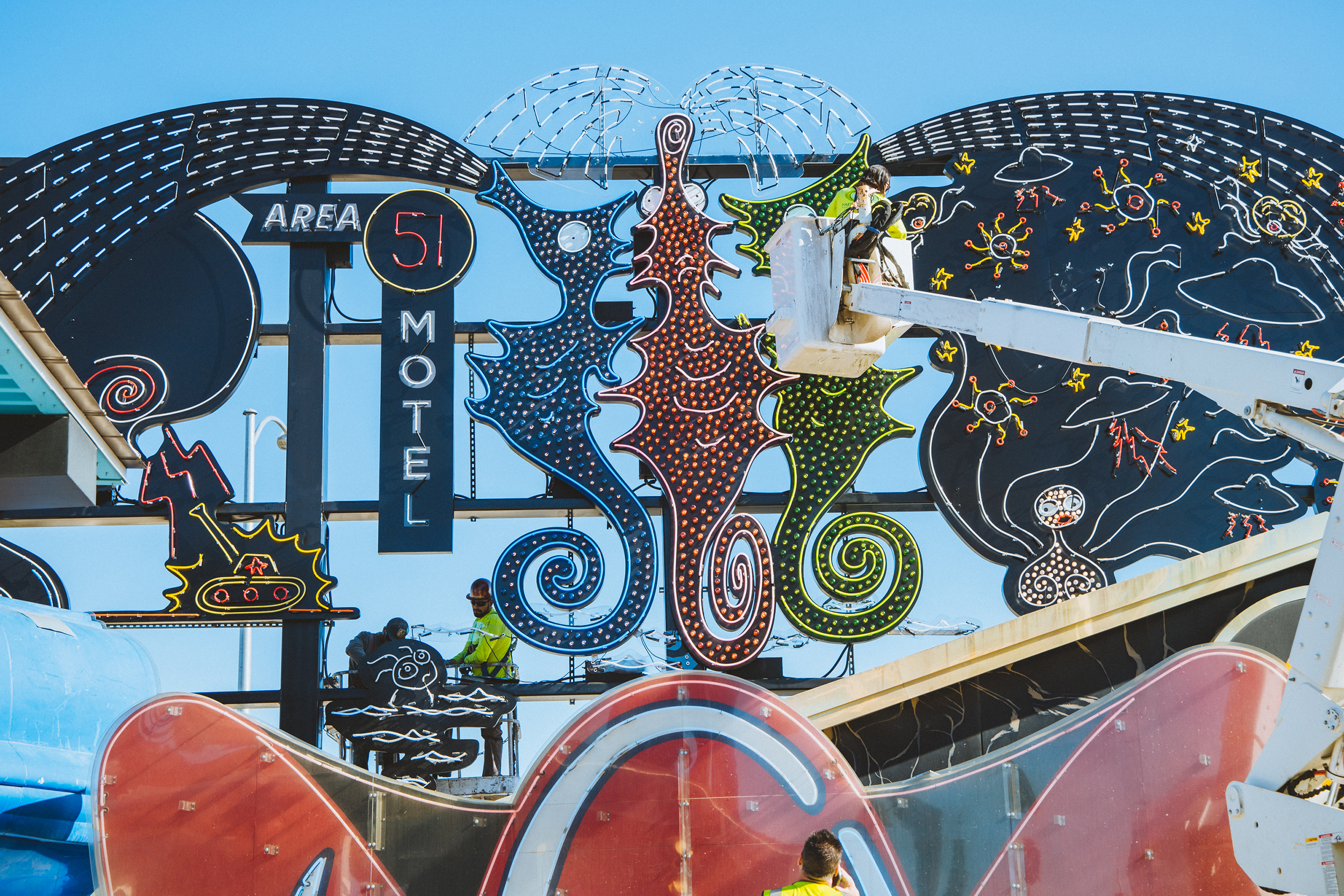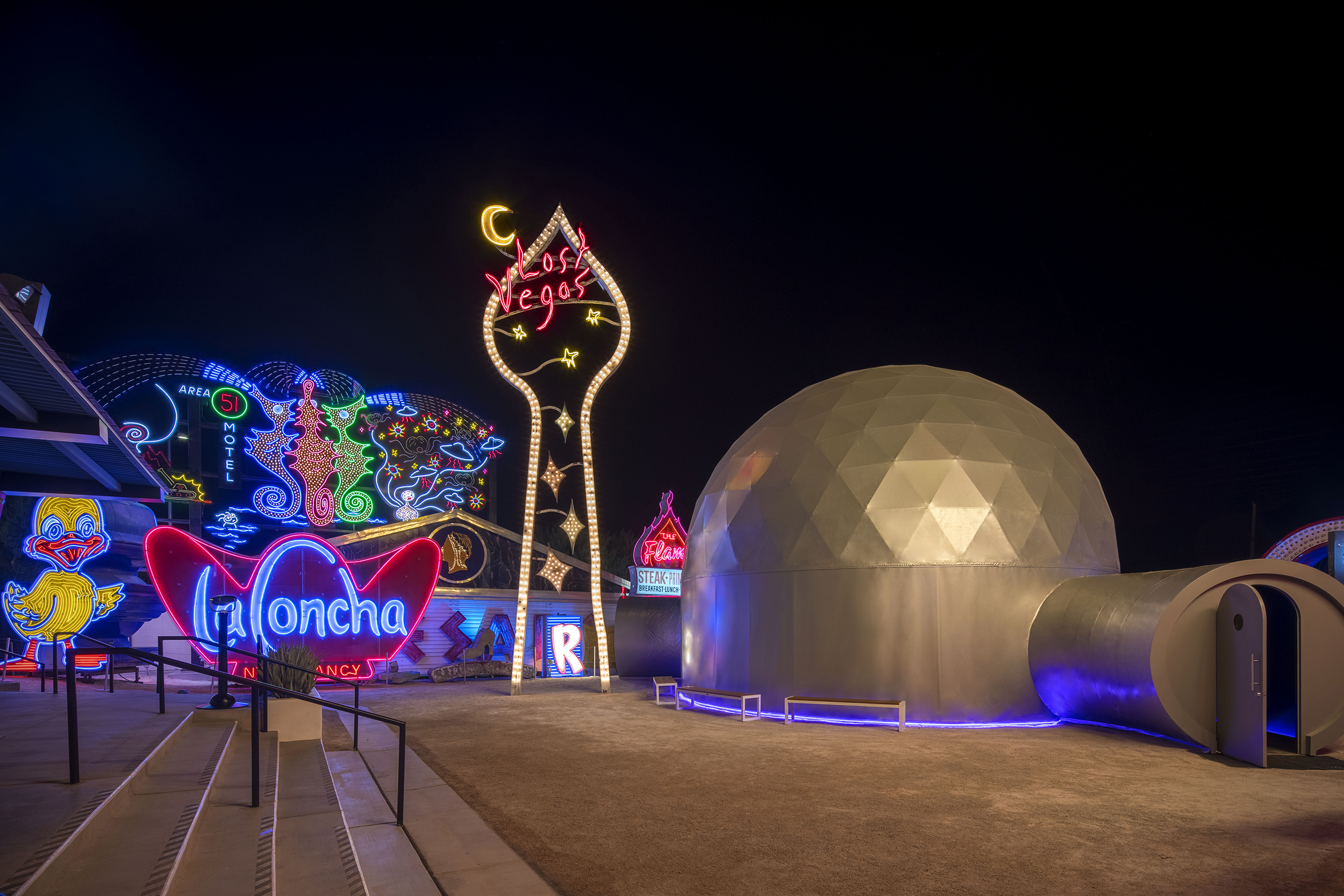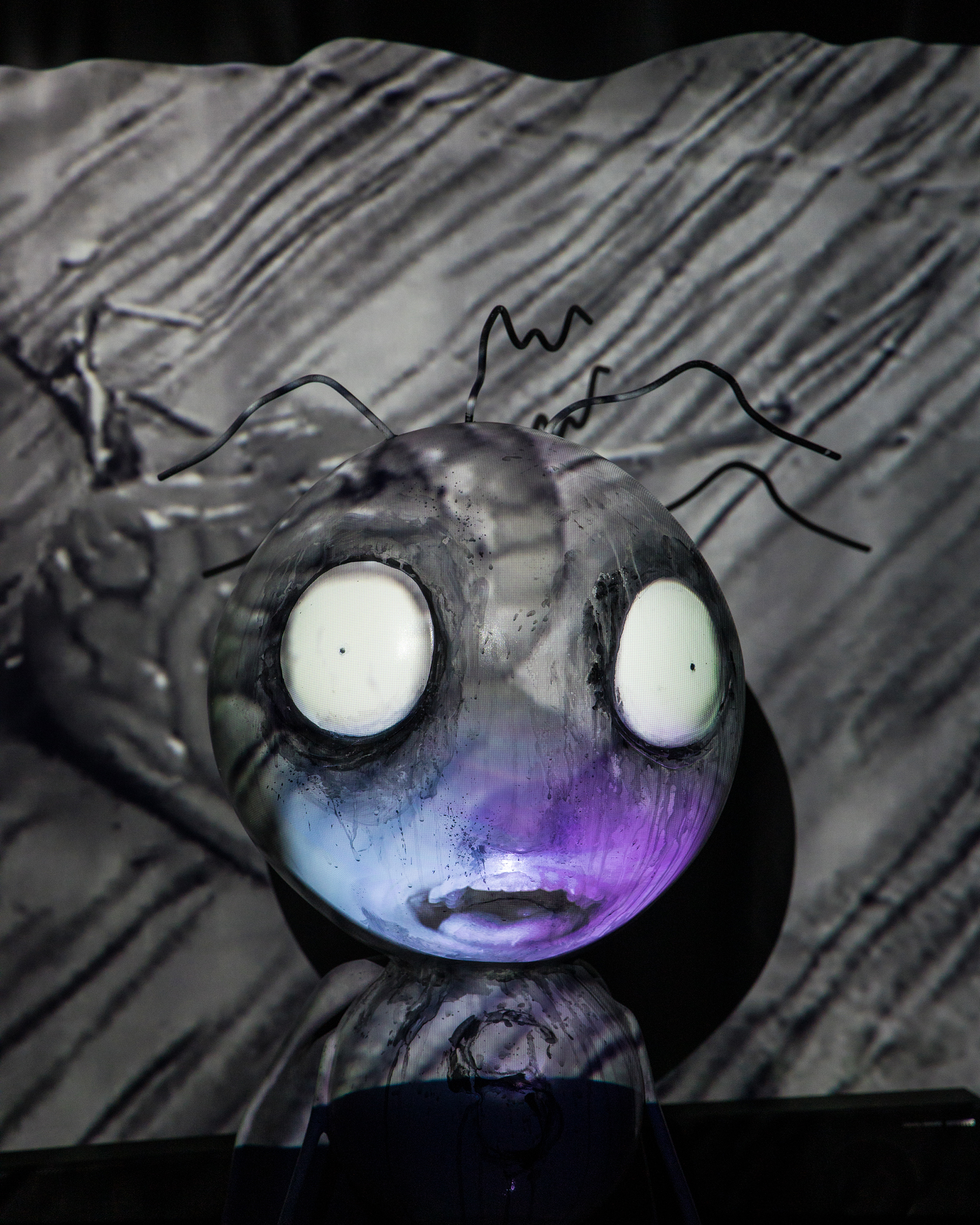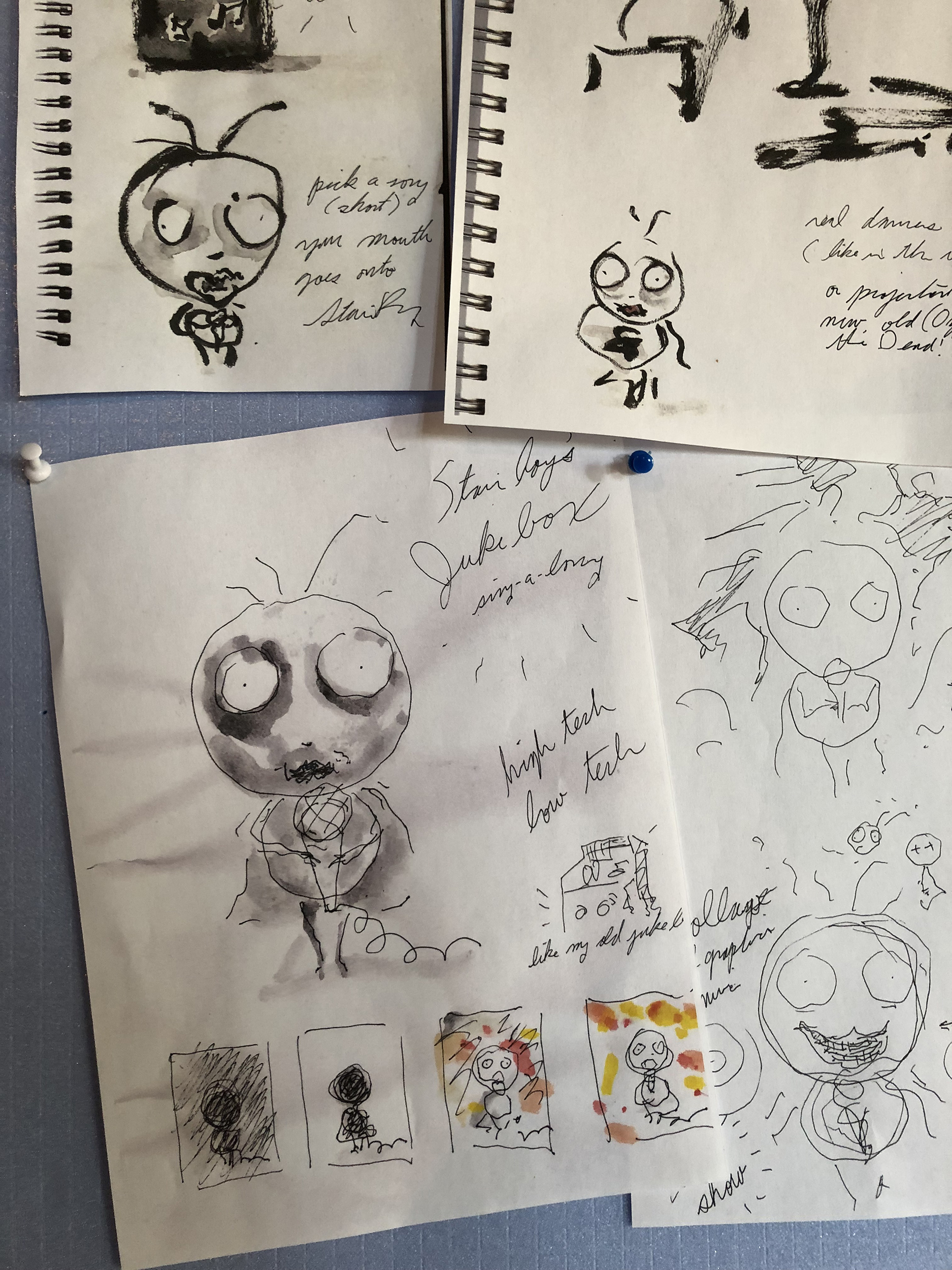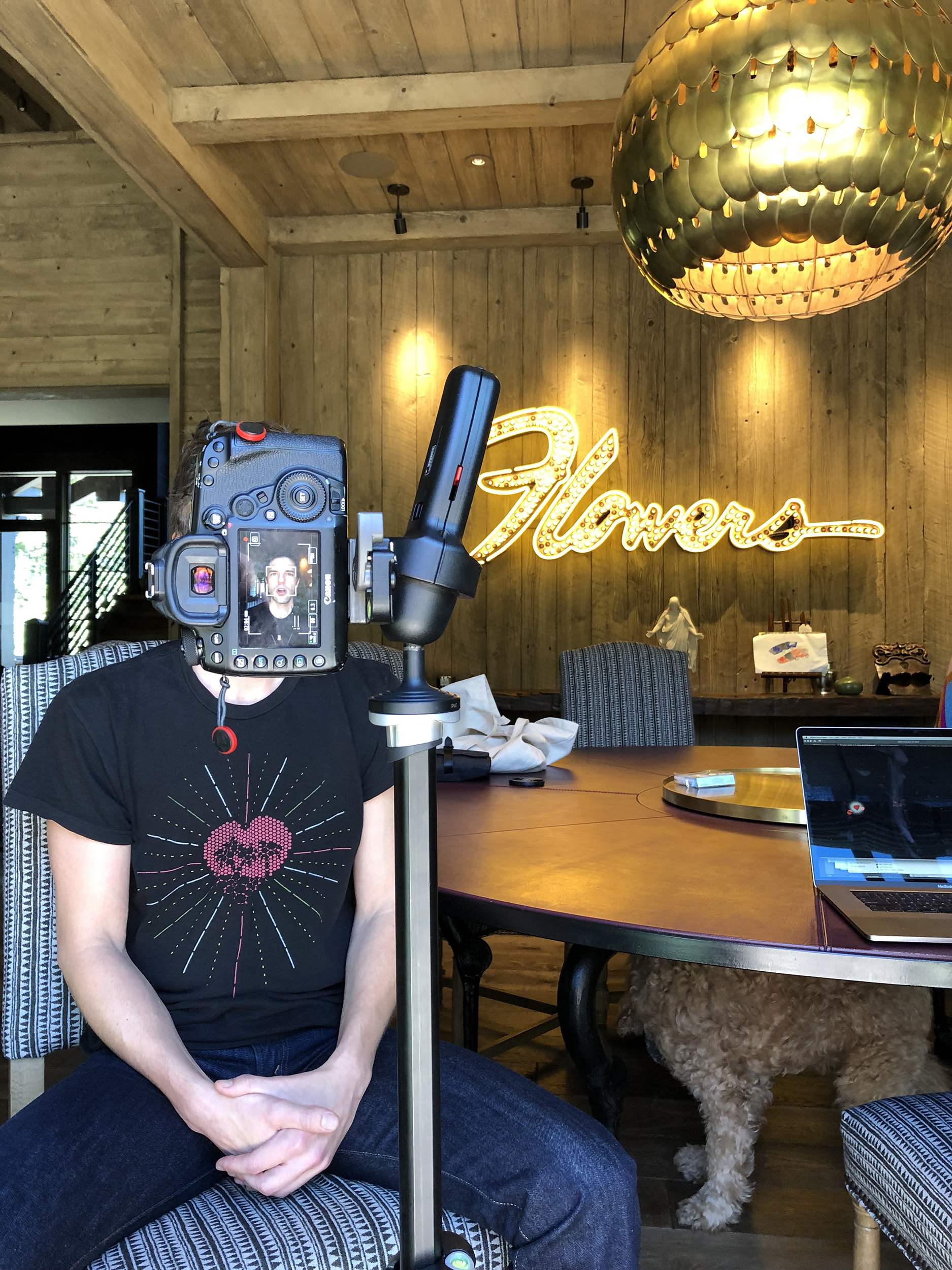Pre-visualization, Lead Design, Exhibition
TIM BURTON'S LOST VEGAS
Translating a vision of new artworks into a Las Vegas exhibition.
An exhibition of Las Vegas-inspired artworks, created specifically to be nested within The Neon Museum's visually complex boneyard of signage artifacts.
In late 2019 I worked directly with director & artist Tim Burton to translate his vision and sketches into polished creations as lead designer for the Lost Vegas: Tim Burton @ The Neon Museum.
The broad scope of work started with brainstorming sessions that led to concept designs for infrastructural elements, which resulted in the creation of many new and original artworks by Tim Burton. My primary role was to work directly with Tim to translate his visions into precise, technical designs that could lead to fabrication. Any new artworks created for this exhibit needed to complement the existing neon collection at The Neon Museum. I was able to lead the pre-visualization of the exhibition through the use of photogrammetry by creating it first in 3D and VR. We then hired the partners necessary to execute those designs.
Working closely with Tim for three months across three locations—France, Los Angeles, and Las Vegas—alongside Lilah Lutes, and executive producer Sam Kelley, who were both paramount in all aspects of making this exhibition happen. We successfully brought dozens of new Tim Burton creations to life with collaborative efforts from multiple crew members, and partners. In coordination with curator Jenny He, we overcame the biggest challenge of coordinating everything within a two-week installation window.
PRESS
CBS This Morning
Lost Vegas Pylon Sign
This towering forty-foot-tall structure served as the title piece of the exhibition.
Inspired by the iconic pylon sign at The Dunes Hotel, with animated bulbs that lit up from base to peak and down again, and featured a subtle flicker in the neon letters and Stardust Resort and Casino-inspired star shapes. The team finished the tower structure surface to resemble the weathered ivory bones of an old mythical creature and treated the bulbs to make them appear dust-and-time worn, which blended in perfectly with the existing collection.
Process:
My involvement in crafting the Pylon Sign was extensive: from initial sketches to final details of the design. We needed to ensure it was impressive and towering in scale but had a balanced relationship with the height of The Dome, neon grid wall, patio roof, and the preexisting Hard Rock Café Guitar. After creating it digitally in 3D, I refined the desired bulb and neon animation, then handed off timing videos to the fabricator for on-site programming.
FABRICATION: Hartlauer Signs
Dome Design
As an experiential centerpiece of the exhibition, Tim Burton wanted to create a dark space that emulated the vibe of an old, dim, mind-warping, cosmic casino.
Process:
We needed to make the most of the open area in The Boneyard and build the largest possible geodesic dome given the available space. I worked with the museum to confirm The Dome's final footprint, which would allow Tim to execute his vision
I brought on David Sirola to take the lead on technical design, who gave specific diagrams to our fabricators, MC2, for construction. Together, we pre-conceptualized the flow, considered ADA compliance, and came up with creative solutions to problems that would only arise in a dome built in a hot, dusty desert.
The Dome housed a moving chandelier, a ceiling projection-mapped with rotating art, Lady Peak Hand neon art displayed above the entrance, Robot Boy Falls in love with Slot Machine, and Looking Glass Holograms.
TECHNICAL DESIGNER: David Sirola
FABRICATION PARTNERS: MC2, Pacific Domes, Seeing Eye Lighting Design
Sketch Holograms
Embedded into The Dome's walls was a series of twelve holographic, digital dioramas based on sketches of Tim's strange and magical memories of Las Vegas. Using Looking Glass holographic displays, we brought these memories to life by adding dimensionality, animations, and soundscapes.
Process:
Tim knew early on that he wanted to embed objects into the walls of The Dome. I brought a Looking Glass holographic display to Tim and built a demo using a 3D model of Robot Boy. He was excited about the potential of these smaller experiences and got to work. When we conceptualized their location in The Dome, we placed them low enough so adults would have to bend down, kids could easily see them, and that they were ADA compliant.
To create these holograms, I took Tim's 2D sketches and scanned them, separated the background, midground, and foreground in Photoshop, then brought those into Blender—a tool to create objects into 3-dimensional assets. I modeled and textured 3D objects out of each layer to create realistic, lifelike digital dioramas of his sketches. I hired sound designer Parallel Studios to create sonic experiences for each scene, directed by Tim, which featured some Tim Burton-specific easter eggs that included celebrity voice overs. I handed off my 3D assets and the sound designs to Michael Hill, who brought these together in the Looking Glass displays as moving dioramas. Hill also programmed them to automatically start and shut down at the start and end of each day.
DEVELOPMENT: Michael Hill
SOUND DESIGN: Ethan Rose of Parallel Studio
MOUNT FABRICATION: Ezra Cimino-Hurt
Robot Boy Falls in Love with Slot Machine
One of the most technologically diverse artworks of the entire exhibition.
Serving as the focal point of The Dome, it required concept design, industrial design, videography of talent, projection mapping for front and rear projection, VFX, and animatronics (by Legacy Effects) to complete.
Process:
This piece started as a poem-turned-sketch by Tim. The biggest production challenge we overcame was the very distinct design vision Tim had for the slot machine. I worked directly with Tim to clearly define the concept, created rough sketches, and supplied design inspiration to get us to the Slot Machine that lived in Tim's mind. Tim envisioned something sleek and vintage that referenced streamliner trains, 1960s era mustangs, and vintage slot machines. I built a 3D model in Blender, put it into VR, and showed Tim a true-to-life version to finalize the placement, scale, and proportions of the design before sending it to Legacy Effects to refine and fabricate.
I created the animatronic face inside the slot machine in close collaboration with Tim. It featured his distinct humanoid aesthetics: an oversized forehead, small pointed nose, and cartoonishly large eyes. We landed on rear-projection to bring the machine to life—inspired by Madame Leota, the famous fortune-teller of The Haunted Mansion. Once finalized, I filmed the actor Tim felt best represented the Slot Machine (another celebrity easter egg!). I then tackled the color and VFX needed to transform the raw footage into a seamless rear-projection video of the humanoid animatronic form.
Finally, I created the timing animations for the experience so that the narrative would come to life on an automatic loop inside The Dome.
PRODUCTION: Legacy Effects
SOUND DESIGN: Ethan Rose of Parallel Studio
Neon Grid Wall
This towering forty-foot-tall structure served as the title piece of the exhibition.
One creative concept that we knew would become a reality from the start was a giant neon-filled wall within The Boneyard that complimented the size of multiple structures; the Lost Vegas Pylon Sign, The Dome, and the Hard Rock guitar.
Process:
I digitized the sketches that Tim created inspired by his childhood memories of Las Vegas and vectorized them using Illustrator. We determined sizing and placement within The Boneyard, created a vectorized frame, and displayed a layout of the art using 3D VR to assess multiple viewpoints until Tim was satisfied. I then animated the neon and bulbs using After Effects to ensure our fabricators could light up the sign with the animation intentions Tim had in mind and handed assets off to Hartlauer Signs to fabricate, install, and power the Neon Grid Wall.
FABRICATION: Hartlauer Signs
Viewports
One of Tim Burton's loftier ideas was to place a massive inflatable monster around the neck of the 80-foot Hard Rock guitar sign.
As more unlikely project ideas came to fruition that we knew we couldn't tackle without attached expenses or physical/time constraints, I came up with a way to incorporate them through a new type of virtual reality experience that blended classic tourism elements. Our custom Viewports combine the technology of binocular viewing scopes found at popular sightseeing destinations with that of low-fi View-Masters. We placed these Viewports in strategic, discoverable locations around The Boneyard. As you peered into each Viewport, Tim's art would be brought to life—interacting with the scenery nearby.
Process:
Using the coin-operated binoculars at the Santa Monica Pier and the nostalgia-packed analog View-Master as references, I designed powerless standalone stations that featured multiple scenes on each Reel, originally designed to be manually advanced by the viewer.
For the Reels, I started with the photogrammetry scenes that we used in pre-visualization VR—a warped 3D perspective of The Boneyard that reminded Tim of visions in his dreams. I then took these dreamscapes, created backdrops from them, and strategically placed stereoscopic photographs I took of Tim's other artworks that were blended into each scene. These crafted a distorted and surreal version of The Neon Museum. I later had these scenes printed as View-Master reels.
Fabricator Ezra Cimino-Hurt created an interaction that would allow the viewer to advance the slides manually. We launched with a lamp-like chain pull that hung just below the eyes of the binoculars. Unfortunately, between the dusty desert elements and general wear-and-tear from the public, it was clear early in production that this manual advancement was not a long-term option. Cimino-Hurt created a battery-powered automatic advancement system and was able to install them inside each Viewport. While it wasn't the analog experience we had initially intended, it was still reminiscent of the moment you drop a coin into the Santa Monica Pier's binoculars, and the scenery suddenly blinks to life.
TECHNICAL DESIGN, FABRICATION: Ezra Cimino-Hurt
PHOTOGRAMMETRY: Spencer Lindsay
Stainboy Arcade
The inspiration for Stainboy Arcade came from the mysterious, off-limits areas found in Las Vegas casinos Tim saw as a child. We set out to create a discoverable space where a life-sized Stainboy could be performing on stage for an audience.
In its final form, Stainboy Arcade was a fun, collaborative encounter between the viewer and the performer. Patrons entered a dark structure, marked only with a few neon music notes, stepped up to a microphone, pressed a glowing red button, and began a ventriloquism sing-a-long performance as Stainboy up on a stage. Snippets of hit karaoke songs would play, paired with projections of classic cult movie footage. Cameras strategically placed inside the microphone displayed the performer's mouth onto Stainboy's while the two performed face-to-face, staring into each other's eyes. To enhance the strangeness, one group of performers would exit through a curtain in the back, and the next would enter.
Process:
During one of the first brainstorming sessions with Tim, we had the life-size sculpture of Stainboy on hand, and Tim asked, "Can we project a moving mouth onto Stainboy so he can talk or come to life?" I built a rough version of this expanding the concept with a live video feed and began trying to find a creative way to hide the camera. When thinking of housing that made sense for a mouth and camera to meet, the idea of customizing a microphone with a built-in camera and lights became obvious. Naturally, this evolved into playing karaoke songs to make it look like Stainboy was singing. Yes, the entire development process was as fun as it sounds.
Tim and I created a playlist of popular karaoke songs, refined each into short snippets, gathered and edited video clips from Tim's favorite cult movies, and strategically paired these clips with the music. From there, I designed a 3D version of the whole structure in VR to assess the size, scale, and distance of the performer to the stage, which helped us determine our approach for fabrication.
We worked with multiple fabrication partners to tackle the following builds: craft and install a modified shipping container, paint the exterior a textured matte black, install neon musical notes above the entrance outside, build a stage, install a custom-built microphone, and create a glowing red button for song randomization. We also installed a front projector, an ultra-short-throw projector, a high-fi speaker system, and masking curtains to mimic a dingy dive bar experience.
CONTAINER FABRICATION: Alternative Living Spaces
TECHNICAL FABRICATION: Ezra Cimino-Hurt, Michael Hill
SOUND DESIGN: Ethan Rose of Parallel Studio
NEON: Knights of Neon
Brilliant! Tim Burton Featurette
This towering forty-foot-tall structure served as the title piece of the exhibition.
The final showpiece that Tim and I tackled was a reimagining of the finale to my permanent installation at The Neon Museum, Brilliant!. I incorporated elements found throughout the exhibition, used footage from Tim's Las Vegas-inspired movies, and filmed Brandon Flowers of The Killers performing their song "The Man."
Process:
Tim Burton's Mars Attacks filmed in the very spot Brilliant! resides. Hollywood had been using the former Young Electric Sign Company (YESCO) storage lot as a film location since the 1970s. It was important to me to pay homage to the location's history by integrating scenes from the film into the finale.
Luckily, we obtained approval from Warner Brothers to use footage from Mars Attacks and The Landmark hotel implosion. We also had access to some rare screen and animation tests of the Martians that I integrated seamlessly throughout the update. Having access to standalone animation loops of the Martians was crucial in crafting a 360-degree experience.
VIDEO FOOTAGE EDITING: Derek Frey
SPATIAL SOUND ENGINEERING: Ethan Rose of Parallel Studio
